The Name of the Rose, Umberto Eco.

I remember seeing the film of the book a very long time ago and loved it. Unusually for a cerebral film about medieval monks debating the fine points of theology and heresy, a lot of people seemed to like it as well and it did very well at the box office. I wish there were more films made like this. I've been wanting to read the book since then but put that thought aside until the film's influence waned Now that I've read it, I see how faithful an adaptation it was.
The book has great depth on various levels, as you would expect from Professor Eco. Perhaps the most superficial level is the detective novel, with nods to Conan Doyle in the name of the main protagonist, the English monk William of Baskerville. Although played with a broad Scottish accent in the film, Sean Connery was good in this role. Eco's prose is detailed and readable, although I have to admit to skipping over some passages fairly quickly, particularly the latter parts of Adso's mystical dream late in the book (and one or two others): a bit too long. I also wished I understood more latin, which figures regularly and is left untranslated. Wherever the monks hail from, whether Italy, Germany, Spain or England, they would be talking to each other in Latin of course, the lingua franca of the time.

As long ago as the film, I liked to submerge myself in a lot of history, including many books covering the history of Christianity and the Church, especially all the various debates on the canon. The question of the right teachings was of high importance in an age where literacy was uncommon and the "truth" something only the Church held. The spread of wrong teachings and heresy was something to guard against and watch out for at all times. The trial of the cellarer for heresy is a centrepiece in the novel and as horrific as it is fascinating. Through such scenes and the commentary and debate around them, Eco brings the medieval world to life: a world that was almost entirely centred around prayer, where religion was a matter of life (of the eternal variety) and death. The heart of the book revolves around the real debate over the Poverty of Christ, with the Franciscans fighting to save their order from charges of heresy and dissolution by the Catholic Church.
Within the church and religious communities, this sort of debate and tension has never really disappeared. Couple the theology with the investigation of a raft of murders and we have a unique book - hard going at times but a rewarding work.
A strange coincidence that I bought three books at the same time and they have some references to each other : Possession, by A. S. Byatt, a collection of stories by Jorge Luis Borges and this book (a beautiful hardback Everyman edition). Byatt mentions Eco's book in her introduction as showing it was possible to write a successful and intellectual book set in a medieval monastery. The writer David Lodge adds an introduction to Eco's book and highlights the debt paid to Borges in the novel (the Labyrinth, library, the monk Jorge de Burgos). I've yet to read Borges but am looking forward to it.

As much as I liked the Firefox OS phone, I've stopped using it and bought a new Motorola Moto G Android phone.
The ZTE is just too slow and I found it increasingly painful to use. I hope to see Mozilla get their mobile OS on better hardware and, at that point, I'd have another look. For the money paid (£65) it's no great loss and the Moto G (at £160) is an amazing phone.
There'll be no FF OS updates from v1.0 here it seems, and a last straw was discovering my bluebooth headphones won't work with it: extremely minimal bluetooth support. Couple this with a slow touchscreen, sometimes needing multiple presses to get a response, and then a few complete freezes and I've given up. For me, attempting my own OS builds doesn't seem a reasonable thing to do.

The Motorola Moto G is a new "Google" phone and runs (almost) stock Android 4.3 (upgrade to 4.4 soon apparently). I haven't used Android on a phone since 2.2 (Cyanogen) and the changes are huge. It's an extremely polished interface, the whole thing looking and feeling great. It's fast, has a great screen and seems to have very good battery life as well. I am very happy with it.
Less satisfying is that MTP, the "Media Transfer Protocol", doesn't work very well on Linux. Ironic this is so bad, considering a) Android is based on Linux and b) Google do a lot of work using (and engineering) Linux. Go-mtpfs seems to work on my desktop (manual mount, fine) but not on my X220 laptop (this morning). MTP support seems to be fragile, spotty and therefore quite annoying!

A few weeks ago, I bought a National Art Pass. This gives me a discount on the price of entry of a lot of art galleries and museums and over the course of a year, the £40 it cost me will be worthwhile in savings. It also contributes to the work they do saving and restoring art.
I used the pass for the first time visiting the Dulwich Picture Gallery for their exhibition Whistler and the Thames.
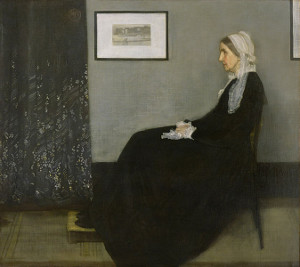
James Abbott McNeill Whistler was an American artist who worked mainly in London during the middle and late part of the 19th Century.
I'm not very familiar with his work other than his most famous painting Arrangement in Grey and Black No.1, colloquially known as Whistler's Mother (see opposite). A great painting I think, with its subdued, almost monochromatic tones and good composition. I also appreciated his titling skills. Note: not exhibited at the gallery.
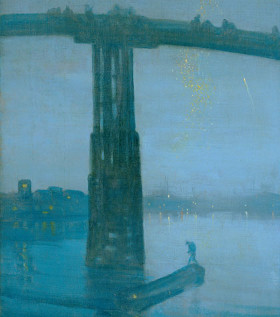
A painting that was exhibited is on the left. Nocturne: Blue and Gold - Old Battersea Bridge (1872) is a picture more interested in form and colour than any realistic image of a bridge and there's a real atmosphere to it. The Nocturnes are amongst his most famous paintings and one of the best parts of the exhibition.
However, most of the show was of his etchings and lithographs of the river environment. Although of some interest, especially the historical interest of a river side changing dramatically, this work was of much lesser impact than something like a large Nocturne painting.
So not a bad exhibition but not as good as I had hoped: too many drawings and too little nocturne. Many of the paintings that were shown struck me as a little dull, both in subject and execution. Whistler has some great paintings in his canon but I'll have to keep an eye open for them in the future rather than find too many in Dulwich just now.
In 2011 I visited the Imperial War Museum and saw T.E. lawrence's motorbike, a Brough Superior SS100 from 1932. Great bike.
A few days ago, the Daily Telegraph reported on a new Brough Superior created by Mark Upham, who bought the rights to the name in 2008.
New :

Old :
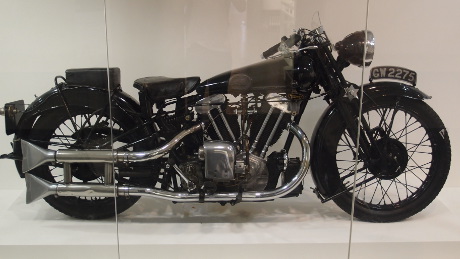
I prefer the old one and it's backend, petrol tank and wheel size but the new model's OK, just a bit expensive at £50,000. I think I'd have to rip out the seat and backend though. I really prefer the "classic" bike style and would buy a Triumph or BSA over a Kawasaki anyday.
Brough's web site.
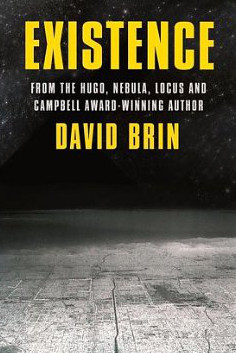
Existence, David Brin.
Existence is a science-fiction book set in the near future. The seas have risen, migration and inequality are big problems, an ultra-rich trilly ("trillionaire") caste inhabit the upper reaches of society and the interconnectedness of everything and everyone is orders of magnitude greater than today. In addition, privacy doesn't exist anymore, for anyone.
That privacy is no more appears to have been the result of a pact with society after a great disaster (referred to as Awfulday), a mechanism to dampen desire for violence and revolution through transparency. Some of the background in the novel is never fully described and has to be picked up through clues.
It's a long book and, in parts, slow. However, pushing through some of the slower and duller sections (earlier) isn't too hard because chapters are often short and it is so full of interesting and sometimes offbeat technology (including AI, massive crowdsourcing, brain/computer interfacing, genetic engineering, virtual realities and others).
The main part of the book concerns the discovery of an alien artifact in Earth orbit, what it is and how it affects us. In large part, a discussion of Fermi's Paradox :
The Fermi Paradox is the apparent contradiction between the high probability extraterrestrial civilizations' existence and the lack of contact with such civilizations.

If the universe is so big, and the probability so high that it contains sentient life, where is everyone? This is not an uncommon field of interest to the science-fiction author but Brin manages to add his own interesting take. The later parts of the book set in the asteroid belt with discoveries and chatter very pertinent to this question are superb.

Apart from being set in a very uncertain future world racked by a lot of problems and containing a fair amount of apocalyptic background chat, the book is definitely not downbeat or depressing. Brin's a good writer (although some bits should have been excised) and the overall arc is upbeat and positive, even if one has to be somewhat nervous with some of the potential implications.
I enjoyed the book and will definitely add his Uplift books to my queue.
Brin's Existence site seems to be full of material, including sections of the book and discussion.

I've never been happy with relying on a cheap ADSL router/modem for firewall security on my home network, but this is what I've been doing for a long time now. How secure is its firmware, does it get updates? Control and configuration is often poor.
Basically, a little "white" box running [1] who knows what.
[1] Usually some version of Linux, often old and perhaps with "patches". Security updates either non-existent or hard to find.

So I bought a cheap but much superior solution from LinITX: an Alix based device running the pfsense firewall.
This runs FreeBSD wrapped up in a very nice web-based GUI to manage a pretty sophisticated firewall/router. A little red box running a known quantity.
What this means in the first instance is I've had to familiarise myself with firewall rules and logs again, something I've not done for a long time (when I used to run one or two Linux firewalls). I've set the box up to be a perimeter device and also plugged in my WIFI as its optional interface. Staring at logs and trying to tweak rules to minimise logs, in some cases scratching my head over odd packets, or hard to hide logs ...

As a slightly paranoid system administrator, the easy availability of firewall logs and rules can keep me up a bit later than usual now.

Intersecting this interest was a report I saw about a test Channel 4 TV are doing just now called Data Baby. They are monitoring the information mobile phones are sending out, which turns out to be a lot, even when they're doing "nothing".
As the phone sat, apparently silent, contacts were in fact being made with 76 different servers around the world, in countries from the US to Europe to China and Singapore.
Mr Miller said: "the interesting thing is, and (it) might be surprising to a lot of people is, that (the) phone is always active. It always has an internet connection, and so the applications, if they choose to, can continue communicating after you've put it down."
My Nexus7 Android tablet sits in my kitchen and I sometimes use it for streaming radio (Tune In), Skype or browsing. It's idle for most of the time, but there is constant traffic to Google's servers, and even the BBC. I haven't captured the traffic to look at it in detail, no doubt it's all quite innocent and normal. But now we all carry these little networked multimedia computers in our pockets, do we need to have some assurance on what information it sends out? What is your phone doing? What permissions do you give an application when you install it?
Not only the phone. Recent reports detail how LG televisions might be logging information about files you are using and sending data back to the manufacturer. Spying basically. Not the sort of thing people would expect of a TV, but all of a piece when consumer electronics converge to be multimedia networked devices. Time to get the wire sniffer out ...

I visited Glasgow a couple of months ago, taking the short train over from Haymarket in Edinburgh to Queen Street. From there it was only a 30 minute walk up Argyle Street to the Kelvingrove museum.
If you visit galleries or museums, you'll probably start noticing how big and imposing the buildings sometimes are. They were often built in the 19th Century at the peak of the Victorian public building and engineering boom, and many are very impressive.
A big grand building, the Kelvingrove was built in a Spanish Baroque style according to wikipedia, opening in 1901. It's easy to see the baroque looking at it and the red sandstone (typical of many buildings in Glasgow) is quite striking.
The inside is pretty good as well.
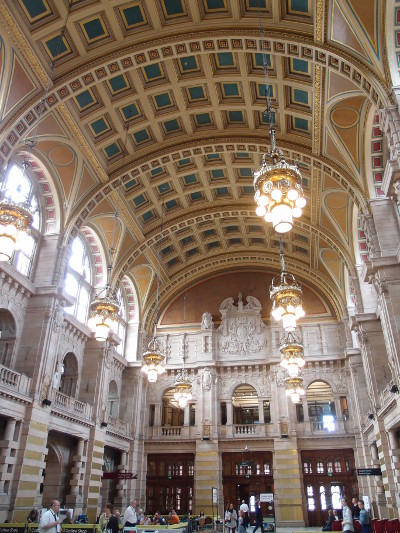

This large central space has a huge pipe organ at one end, demonstrated at 1pm every day when an organist plays to the audience of staff and visitors. An impressive sound (Technical Specification). Bach would be a very fitting use for such an instrument.
Around the hall and spreading out to the other parts of the building on the ground and first floors are the museum's collection, everything from paintings and sculptures to all sorts of objects: dinosaurs, spitfires and even steam engine models. As you would expect, there's a good civic history here as well, especially of the International Exhibition in 1888.
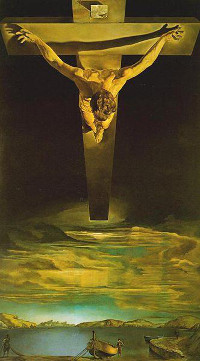
A surprising discovery inside was a very famous Dali painting, Christ of Saint John of the Cross, housed inside its own chapel like room.
This is a very famous and beautiful painting. something people have very deep feeling about. Dali's well known for being a surrealist, and a bit of a clown sometimes, but paintings like this show just how great a classical painter he actually was. His technique is amazing.

As I was leaving the museum, I passed a big Lawn Bowling event. This was the Bowls Scotland 8 Nations Commonwealth Invitation Championship and as I walked by I caught some England versus New Zealand.
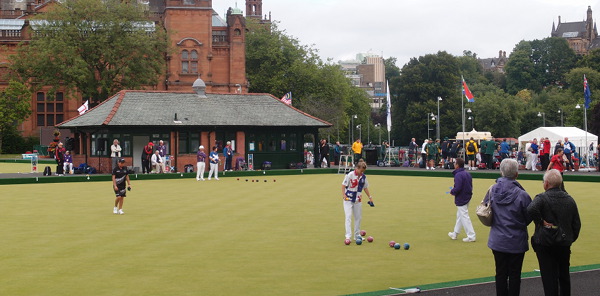

I own an HP ProLiant MicroServer, a great little box I bought a couple of years ago to act as my main file server/NAS machine. It's held up very well and it was very cheap because I got £100 cashback in a deal (and it was cheap already).
It's not a powerful computing machine by any stretch but a very decent server: I've put 8GB RAM in it and 4 2TB disks in RAID5. It's also very decently built by HP, with some care and attention you'd except on a bigger server. Hence the Proliant badge.
One reason I prefer it to my QNAP T419P is that it's got a display connector. The QNAP is serial only, so a bit more fiddly.
To maximise the available storage capacity, I installed Debian on an 8GB USB stick and use the 4 hard disks for the RAID only. Generally, this has been fine, but I have started noticing some fairly severe I/O latency hits recently and this has started causing more frequenet pain elsewhere. Combine this with some USB filesystem corruption a few weeks ago and I wanted to switch away from this configuration.

However, I also learned that the stock HP BIOS does not enable all the system features, including a "spare" SATA port on the motherboard, supposed to be used for a DVD or CDROM. Without another SATA port, it's impossible to add another drive for the OS.
Luckily, I came across a great web page by Joe Miner describing how to update the HP BIOS and enable these hidden features. The usual caveats apply: this is not an officially sanctioned "update" (in fact, it isn't adding anything, but "un-hiding" things. The version remains the same).
Having done the update, I now have an extra motherboard SATA port and have also made all the ports default to 3Gps. I've also stuck a spare 2.5" SATA hard drive in the empty CDROM space.
With this extra disk installed, I used debootstrap to install a new version of Debian on the disk and configured this new install, adding boot loader etc., while the "old" system was running. On Sunday morning I rebooted into the new system, fixed up a few missing bits and pieces and now have a brand new OS installed on a proper disk. So far, so good.

The 2013 Comica independent comic and art fair Comica Comiket took place at Central St Martins Art College behind Kings Cross and St Pancreas in London on Saturday. I was at Comica in 2011 in Bishopsgate and blogged about it.
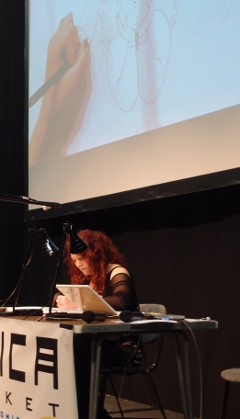
As before, lots and lots of tables with individual artists or independent publishers displaying their wares: graphic novels, hardback or softback comics, small or large, colour and black and white, screen prints, postcards, buttons and many different bits and pieces. Quite fascinating walking around and seeing the sort of thing people create.
One table featured Zoom Rockman, a 13 year old artist and his "proper" comic called The Zoom. I bought a copy. Apparently, he's also "writing stuff for the Beano" , according to (I assume) his Mum, who was sat beside him. I don't generally buy "Beano" style stuff (honest) but made an exception here. Impressive for such a young man.

Like the last time, artists were invited to sit on stage and draw in public, with the work projected on a large screen so people could watch the process.
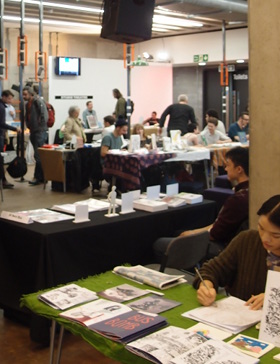
It's always quite inspiring strolling amongst so many artists and writers, stopping and talking about their work and how it's made. There's some fantastic stuff here and, as I noticed before, the print quality is often amazingly good: a lot of hardback and good paper.
Many small presses producing this quality work but I talked to one artist who described how he published his book via Amazon. This was new to me, possibly using Createspace. The comic book was called The Frumps and was a high-quality, colour paperback (again, not something I generally buy though).
An Italian artist thought that the independent scene in London was booming and special just now, perhaps because the UK never had much of a culture of comics for adults before, unlike France and Italy. Perhaps true, although there have been small press comics and books for decades here. Maybe the cost of producing has dropped so massively, due to computer production, printing technology and internet distribution. A lot of creative people with time on their hands.
I'll mark my diary for the next Comica show!

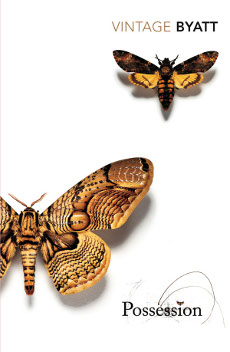
Possession, by A.S. Byatt.
Possession ranks as one of the best books I have read and is one of those rare works one doesn't want to finish.
A great novel has a level of writing skill far superior to the average one and this becomes clear quite quickly in a book. Not only is the writing itself beautiful but the whole structure of the story itself.
This includes two wonderfully realised worlds: the 19th Century where Randolph Henry Ash falls in love with Christabel LaMotte, both poets but Ash very famous, and the 1980's world of academic literary scholarship, picking apart his life and poems. The sometimes dry and musty, sometimes strange and funny ivory tower of college and library work feels real and is surely drawn from the author's own experience.
The book also contains many poems from both Ash and LaMotte, each one in a style to match their own muse. We also have lengthy exchanges of letters between them, and even some myth and fairy tales.
Both couples, Ash and LaMotte in the Victorian world, and Roland Mitchell and Maud Bailey in the modern are very sensitively and believably brought to life. You really care about the characters in the end. This is a great book and very moving.
I am slightly ashamed to say that I did not manage to get through a lot of the longer poems, although I managed the shorter ones. I really need to learn how to read poetry properly.

Computers can be pretty frustrating, even when you think you understand them fairly well. This understanding might make things worse in some ways, as you'll go the extra mile, persevere a bit longer, do the extra debugging and perhaps end up no better off (except even more frustrated).
What's brought this about? Well, over and above the usual nitpicks :
Mozilla Thunderbird IMAP Issues

My domain email stopped working a few days ago. Initially I thought it was just an email dry spell, but some more concerned digging showed a problem connecting to my IMAP server (dovecot).
Some potential complexity here ...IMAP itself but especially the SSL layered over it (imaps). So a fair amount of anxiety about what might have been broken - server update? expired certificate? problem ertificate? or a problem on the client computer, or client mail application?
Suspicion settled on the client application, Mozilla Thunderbird, and I went through a slightly painful process of regressing some major releases and finding that version 23.0 broke things.
Somehow I had managed to get through v23.0, 24.0 and 24.0.1 via the automatic updates with a working mail capability. At least until last week. I am not sure how!
Posted some notes and asked for comment on mozillaZine, and then ended up logging a bug. Should have expected this, but then tasked to find the nightly regression point, a potentially painful process. "Luckily", being on holiday meant I have had some time to do this ...
Mozregression didn't seem to work well for me, not finding any break point, so I took the manual route of downloading some releases close to the last version that worked for me (release 22.0) and seeing where it failed :
2013/05/2013-05-23-00-40-20-comm-aurora/ ----- BAD
...
2013/05/2013-05-20-00-40-04-comm-aurora/ ----- BAD
...
2013/05/2013-05-16-00-40-19-comm-aurora/ ----- BAD
...
2013/05/2013-05-14-00-40-02-comm-aurora/ ----- BAD
2013/05/2013-05-13-00-40-21-comm-aurora/ ----- OK
2013/05/2013-05-12-00-40-18-comm-aurora/ ----- OK
...
2013/05/2013-05-06-00-40-01-comm-aurora/ ----- OK
...
2013/05/2013-05-02-00-40-01-comm-aurora/ ----- OK
So, IMAP to my domain broken with the 2013-05-14 build. Let's see how things go.
- Bug : 930878
IMAP with SSL/TLS,normal password fails to retrieve mail after v22.0
One always wonders ... it's probably my fault somewhere. Still Diggin' :-)
Software RAID Failure
Did I mention holiday? A couple of days ago I got an email with subject line :
Fail event on /dev/md/2:shuttle
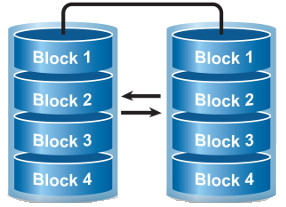
That's a disk failure with a RAID mirror I have in a system (where I normally stage the blog). Something to look forward to fixing when I get home. Hopefully the remaining disk stays well, always a slight concern with something like this.
On top of this issue, I have smart complaining on another system about "unreadable sectors" but this is something I've been momitoring for a couple of months, the number not increasing for now. RAID is not a backup, but it helps mitigate hardware failures.
A quick followup to this. The 500GB 2.5" SATA disk I was going to use as a replacement might not be healthy itself. I did a quick smartctl health check on it and it spat our some warnings :
==> WARNING: These drives may corrupt large files,
see the following web pages for details:
http://knowledge.seagate.com/articles/en_US/FAQ/215451en
http://forums.seagate.com/t5/Momentus-XT-Momentus-Momentus/Momentus-XT-corrupting-large-files-Linux/td-p/109008
http://superuser.com/questions/313447/seagate-momentus-xt-corrupting-files-linux-and-mac
I didn't know smartmontools did this. What a great feature. So, looks like I need to flash the Seagate firmware.
Update
Disk firmware updated, replaced in RAID and syncing the mirror ...
Laptop Random Hibernations

I'm trying Debian Testing (Jessie) on my Thinkpad x220 and it's generally been fine. In fact, in many ways it's the best and fastest version yet (and the laptop's pretty good as well)
However, I've had it decide to hibernate itself when I'm not looking. This wouldn't be so bad except it has a problem resuming (libgcrypt message, similar to bug 724275), so this turns into a hard reset. As usual, a number of places I could look to solve this (initramfs, acpi, uswsusp etc.) and I'll see if I can find some time and do some debugging. Chasing this sort of issue is particularly tough because of the need for rebooting/hibernating to test things.
I was going to followup a post on the Debian Users web forum but it looks like my account has been "deactivated" manually by an admin and I can't re-activate or re-register (username in use!). A large bit of friction having to send a mail to the admins about it and a bit of a crappy policy if you ask me ...
So ...
Maybe I have too many computers, and too many computer related activities going on. I'm juggling different virtual machines running different versions of Debian, doing different things and occasionally thinking about synchronisation. Silly things such as whether to run the development system VM on KVM or switch to VirtualBox? If I use both, best ways to sync them up? Converting raw KVM disk to a VDI etc.
No wonder the odds increase that I end up in pain sometimes. The aim is always to get things sorted and arranged in such a way that I can actually do some work, or something worthwhile. Not spend all day fixing or configuring things before managing any of that!
I've had to re-write and re-post this after accidently losing the (completed) original (another post perhaps). It's always a bit soul-destroying when this sort of thing happens, but nothing to what happened to Thomas Carlyle's first volume of the manuscript of his book on the French Revolution, burnt by accident.
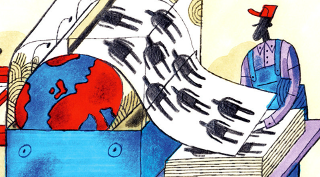
Peter Day's been reporting the world of business for the BBC for 30 years and he's recently written a BBC magazine article and presented a BBC radio show looking back at his experience over the years. Not only is he a good interviewer, asking intelligent questions, he's often concentrated on the technical changes in business. Mass production, new market strategies, the internet (particularly) and, more recently, the promise of 3D printing. On 3D printing (also known as additive manufacturing) :
I was in the offices of a company called Bespoke Innovations, with a designer called Scott Summit. He had gone into partnership with a surgeon to make individualised artificial limbs, using a 3D fabricator. Bespoke can match an existing arm or leg, or design a prosthetic limb to be eye-catching in its own right.
We'll also see these techniques making things like heart valves, bones and other internal organs in the future.
As a retrospective, he's talked to a surprising number of interesting people, sometimes before they and their companies became better known. People like Larry Page of Google (pre-CEO), Gordon Moore of Intel (of the famous Moore's Law, Peter Drucker, a management guru and Joe Kraus, co-founder of the now defunct early 90's search company Excite.
Excite was extinguished by Google a long time ago because Google figured out a way to make money from a much larger percentage of their customers than Excite could.
Reviewing this jolting experience a year or so later, Joe Kraus had by then acquired a significant insight into why Excite had failed and Google had triumphed. He talked about how Excite had been a 20th Century company seeking all its revenue from the top 10 companies in America, as media businesses had been doing for decades. But - and this is the upside-down revolution - Google structured its business around attracting the top million, or ten million, advertisers in the US.
He said: "The 20th Century was about dozens of markets of millions of consumers. The 21st Century is about millions of markets of dozens of consumers."
This leads to a mention of Chris Anderson's long tail, a market phenomenon made possible by the reach of the global internet.
Day thinks that we might be reaching the end of the first industrial age and that a new one is starting. Its first gasp was the dotcom boom (and bust) in the late 1990's and millenium. But a lot of lessons have been learned since then and a clearer picture of the promise of much of this new networked technology is coming into view now.
Read and hear more :

I bought a lovely fresh green tea at Postcard called Supernatural Green. This is made in Japan by someone called Master Matsumoto :
Master Matsumoto, a 4th generation tea maker who is well known for continuing to use old tea trees (his trees are around 90 years old) and no pesticides, herbicides, fertilisers or even manure - hence the tea grows 'supernaturally'. Only 30 kilos of this tea is made each year.
It's light and sweet and as the page linked says, it is "less grassy than sencha". Very recommended and makes a great change from the usual Darjeeling. The best green tea I've drank.

Above: Moonlight Iona Beach
Another new artist I came across at the Francis Kyle gallery on my way to Postcard Teas late last week.
Ramsay Gibb (and the gallery site) has a couple of dozen oil on board paintings of some wild North Easterly landscapes called "The Pilgrim Coast". Wild, isolated and lonely, both mountains and beaches. Atmospheric landscapes that evoke the spiritual, as they have for centuries.
Gibb says at the Kyle Gallery page :
'I was struck by the impressions left on the wet sand by the feet of pilgrims following the staves marking the path out to the island. These prints were continually washed by the tide and obliterated, then re-established by the feet of new pilgrims. This cycle has repeated countless times for hundreds of years. I witnessed the traces of an act that could be dated to the arrival of St. Aidan in 635, the coming of Christianity to the Angles of Northumbria, the beginning of Northumbria’s golden age. These prints in the tidal mud connected me directly to the first footfall of the Christian mission to Lindisfarne. Whereas the last paintings explored the wider context of Pilgrimage, this collection returns to the origins of my inspiration, to the stories of one of the richest flowerings of early spirituality in these islands: the blossoming of Christianity that took place in the kingdom of Northumbria.'
A short film about his work.



This is the landscape of Lindisfarne, of St Cuthbert and Aidan, the Apostle of Northumbria.

I've been setting up my Raspberry Pi again. Last time I used it to monitor a server room door by taking webcam pictures and emailing them to me. Now I'm considering if it would work as a WiFi access point.
Downloading and imaging the latest Raspbian to an SD card worked fine but I kept having problems. Works fine initially but the next morning I'd see massive filesystem corruption (segmentation fault, signal 11 etc. just doing an ls etc.). Maybe a bad SD card? So, try another: same thing the next day. Maybe my Pi is broken?
Turns out to be a poor power supply. I'd plugged it into a micro-USB phone charger that just isn't giving out the right power (needs a good 5V). Try a better supply and it seems fine now. This shows how critical a good power supply is!
How critical? Well, the wrong type can kill you, so be careful. A while ago, a Chinese iPhone user was supposedly electrocuted and died, probably using a poor (and fake) charger. For a detailed look at this, see Ken Shirriff's blog.

Left: Jeremy Galton RBA – Spring / Still Alive
Not a fake. see below.
The Economist has an article about art forgery and makes the pithy point that art is far from inimitable. In fact, it is extremely imitable!
There have been numerous and notorious cases of unknown artists faking their well known counterparts with the art "experts" being none the wiser. Art forgeries that are so good that it can be almost impossiblle to tell the real from the fake. The latest case is in New York and concerns an art dealer buying fakes of Rothko, Pollock and others, and selling them on for millions. Everyone fooled.
The Economist mentions such expensive art works as being "positional goods" :
.. things that are valuable largely because other people can't have them. The painting on the wall, or the sculpture in the garden, is intended to say as much about its owner’s bank balance as about his taste. With most kit a higher price reduces demand. But art, sports cars and fine wine invert the laws of economics.
Why is an almost exact copy of a great piece of art worth so much less to someone? Why is the original, even when it can hardly be told from the fake worth so much more? Hard questions for the art world here, rather like those hard questions asked of the expert wine tasters a while ago.

And just as I was going to "publish" the post, I am reminded about the recent discovery that this old fake Van Gogh, is not a fake at all! Supposedly. So the experts say ...
Mall Art Shows
I visited the Mall Galleries at the weekend and took a look at the shows they have on.
Below: Lillias August, Brush on Folded Paper.

This was a small exhibition on still lives ("Still Alive: Contemporary still life painting"), the Sunday Times Watercolour exhibition and the Derwent Art Prize show (drawings). Lots to see, some very good. It's been a while since I last visited and it's well worth it, and also free.
The Galton oil painting was shown as part of Still Alive.

Above: House Beside the Lake in Winter, Thomas Lamb.
Shown in the Watercolour exhibition.
Precious Bane is a novel by Mary Webb, published in 1924.

I was first aware of Precious Bane when I listened to a BBC Radio 4 adaptation of it a few years ago. It was such a beautiful story and so well performed that I've never forgotten it. I would love to have a copy of the audio now.
One of the things I liked about the play was the accents used: proper Shropshire accent and dialect. Not all words were immediately understandable, and the use of "Ahh" for "yes" was pronounced. The book also uses dialect and, for me, this adds a lot to it's charm.
I've now read it and understand why it's so well loved, at least by those that know of it. Set around the time of the Napoleonic wars in Shropshire, the book tells the story of Prue Sarn and her brother Gideon, their family and neighbours. Prue's been born hare-shotten, that is, she has a "hare lip". This means that some people see her as cursed and she's often reminded that she'll find no marriage partner or true love. In spite of this, she's an intelligent and beautiful person and her relationships are very well drawn and natural. As is the darker side of human nature on occasion.
The story shows how the pursuit of money corrupts and destroys (the bane of the title) and also how true beauty is much more than skin deep.
It's a very affecting and moving book.
When I first heard about Phoebe Anna Traquair's Edinburgh murals, I knew I had to see them. If anything, they're even better than I expected. I'm still amazed that I'd never heard of her, or heard of her work, even though I went to school and university in the city (including an art history course).

The Great Cherubim. Detail of Chancel Arch from Catholic Apostolic Church, Edinburgh. 1893-94.
Walking into the Catholic Apostolic Church on a sunny day is a magical experience.
With the sun streaming through the windows, the murals are clear, bright and colourful and the large interior space of the church adds to the wonder. With churches, apart from some puritan and iconoclastic episodes, hasn't it ever been so?
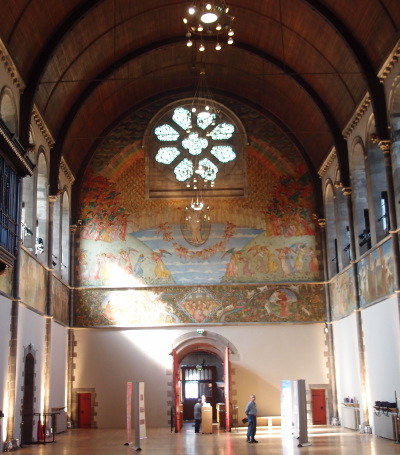
Above: The West wall of the church.
Looking up and around it is easy to feel the sort of optimism that this art was designed to inspire.
Born in Dublin but based in Edinburgh, Traquair was working at the end of the 19th and first part of the 20th Centuries. There's a lot of Pre-Raphaelite in her work and her influences include Dante Gabriel Rosetti and William Blake, as well as other writers and poets, like Tennyson and Browning.
She visited Italy in the 1880's and you can see the influence of artists like Botticelli and Fra Angelico on her painting.

Fra Angelico, The Forerunners Of Christ
With Saints And Martyrs. 1423-4.

Traquair, detail of mural.
I love the Fra Angelico painting The Forerunners of Christ in the National Gallery. Lots of little portraits of people looking this way and that, many slightly different characters with their own personality.

I have a few photographs of it all but cannot do proper justice to her paintings, or the building. As usual, you have to see them in person to really appreciate how wonderful they are.
If you are in Edinburgh, you really have to visit.
I'm not alone in thinking so much of this place and Traquair's painting. Some other very good sites with lots of good pictures of the art are :

Traquair at the Last Supper
They're viewable on certain dates only. Next dates :
8th Sept
6th Oct
10th Nov
8th December 2013

Back from Edinburgh a.k.a. Auld Reekie.
I try and visit friends and family in Edinburgh once a year now, and this time I went a little earlier than usual and managed to catch some good weather for a change. Some sunshine and warmth makes a good difference to an already beautiful city.
Having gone to school and university up here, I know the city quite well but it's changed a lot. I caught the tail end of the festival this time and can't remember it ever being so busy when I lived there.
So, I've done the usual: lots of gallery and museum trips, including a visit to Glasgow Kelvingrove Museum. This means lots of history and art, some of it very awe inspiring. I'll be reporting on it over the new few days and weeks, so watch out.
My return home was also "interesting" when my train was cancelled at Doncaster and I had to figure out how to carry on to London, along with hundreds of other people. In the end, I got home via Sheffield, and a roundabout route!

The ZTE Open Firefox OS phone is great, but will not be a good fit for everyone. It's not for "hardcore" Android or iOS iPhone users. It's definitely not a hero phone but perhaps it will appear on one some day. I expect there will be many more phones to come.
The important thing about this phone is that it's open and the barrier of entry to develop for it is very low. It's basically HTML, CSS and Javascript i.e. the same technologies we use to build the web. And this is what Mozilla is about.
I'm with Peter Rukavina :
Through one lens Firefox OS is a technical triumph: an open mobile operating system conjured up in two years by a not-for-profit organization.
Through another lens running Firefox OS is like running Linux on an IBM PC in 1993: it sort of works; sometimes it crashes, sometimes the wifi mysteriously shuts itself off, and while it does a lot, and is capable of a lot more, right now it does much less than an iPod touch, if only because the ecosystem of open web apps to run on it is only just beginning.
But under the hood and, indeed, infused into almost every pore of its being, it is open. This means so many things and means so much.
There are a lot of docs online and at some point I think I'd like to try a "Hello World" application!

I've had the ZTE Open Firefox OS phone for a few days and can write down some initial impressions. I should note upfront that I'm definitely not a phone (let alone a smartphone) "power" user. I've got very simple needs (as my use of both my HTC and this phone will attest!).
The ZTE specs are basic :
- 1.0 GHz Cortex-A5, 320 x 480, 256 MB RAM, 512 MB ROM,
Wi-Fi 802.11 b/g/n, 3.15 MP
Yes, the RAM size slightly shocked me: it's half my HTC Desire (which I consider ridiculously small now). Definitely a budget phone.
Having said that, the phone looks good and works well. The touch screen's fine and the OS feels quick enough and responsive. I can make and receive calls, connect to wifi and 3G, surf the internet, listen to music. It has some rough edges of course but I'm happy with it.
It is a little bit of a shock to the system diving into the non-Android world: there are no Android apps here, no Google Play. This means no Google Maps, VLC media player or Google Authenticator for instance. These all seem to have decent (for me) equivalents though: Here Maps, the built-in Music app and GAuth Authenticator. An app I will miss is Meditation Helper though.
But as for Meditation Helper, after having a little exposure to the Firefox OS "ecosystem", it's tempting to try my hand at App development.

The only slight catch I have had so far was getting my Google Contacts into the phone. I found a page that pointed me at an app that can import these ...
And this is where it got interesting!
The phone can import from the SIM card or Facebook by default only. Neither option being good for me.
And some will now laugh at the process ...
- Clone the FirefoxOS Contacts Importer GitHub repository
- Add the Firefox OS simulator Add-On to Firefox web browser
- Enable Remote Debugging on the phone (Settings / Device Information / Developer)
- Add the manifest for the Contacts Importer to the simulator (Add Folder)

- Connect the phone to the computer running Firefox (simulator sees device connected)

- Click Push to install on the phone

- On the phone, Allow this operation
I also used two Google Authenticator backup codes - one when I ran the app in the simulator and one when I ran it on the phone.
Presto! ... I could now import my contacts from Google. I admit this doesn't look great from the average user's perspective but I'm sure it'll change and improve.
Let me also point out that there's an easy way too install apps via the Firefox Marketplace online. I didn't check this route and Importer is available!
Right now, the phone's being bought and used by a lot of free software (and Mozilla) fans, but perhaps many other types of user will come to the phone from a standard (non-smart) phone and not be tied to any Google services.
To me, running the simulator and pushing a GitHub cloned app to the phone was eye-opening and one of the reasons the phone is exciting.

I've ordered a ZTE Open Firefox OS phone.
For £60, I thought
"why not?".
My current phone is a (almost) 4 year old HTC Desire and is showing its age. I've been expecting to keep it active for another 6 months at least and might still (we will see how things go) but the minuscule storage (512MB internal) and degrading voice quality (harder to hear calls) is forcing my hand a little.
I don't actually know the specs for this ZTE, but for £60 I can't expect much (but perhaps more than my old HTC). And I definitely like supporting Mozilla, which is why I use Firefox as my web browser I'll report back once I've got it and had a play. It's on its way ...

I'm just finishing a book called Alex's Adventures in Numberland by Alex Bellos. A review at The Guardian.
The book's a gentle walk through mathematics from the very basics to the more advanced. It's written for the average person though, so tries not to get too complicated. By coincidence, I noticed a radio program called Land of the Rising Sums presented by the author and caught it online.
Bellos investigates possible reasons that some other cultures (particularly East Asian e.g. Japanese and Chinese) do much better in maths tests when much younger.
He starts by looking at how we all count. In Western European languages, the names of numbers do not make complete sense as we count. We say .. eight, nine, ten, eleven, twelve etc. In Japanese, we count eight, nine, ten, ten-one, ten-two etc. Numbers have a more logical naming structure and some people consider this an advantage when learning and using them.
In addition, the Chinese words for the numbers one to nine are all concise, single syllables. As a result, the Chinese can memorise more numbers than the average European. In Japan, the kuku, or multiplication tables, are more like a rhyme. The words used for the numbers are moulded in such a way to make the tables more of a poem. This seems to make the multiplication tables much easier to recall, even late in life.

Bellos concentrates on the Japanese love of the soroban, or abacus. A lot of Japanese school children learn the abacus and there are lots of after school clubs devoted to it. One of the most amazing parts of the show is devoted to the game of Anzan, especially Flash Anzan. Hearing this is quite amazing, even though no rattling abacuses are involved. It's all in their heads on virtual soroban.
Three beeps ...
Then 15 numbers appear, one at a time ... e.g.
561
672
291
810
411
626
712
122
958
421
536
271
397
112
813
About 0.2 seconds between each, everything finished in about three seconds.
How fast can you calculate the sum of the numbers? In the flash anzan (and there are proper competitions), the best can do this in a couple of seconds. Reading about this is one thing but hearing it another. A scientist on the program couldn't seem to believe it. But you can find it on YouTube. Amazing!

The following quote came up on Hacker News in the context of a discussion of Adam Curtis' blog post on MI5 and MI6. It comes from General Kurt von Hammerstein-Equord, German officer from the First and Second World War, an implacable enemy of Hitler.
This is how he classifies his men :
I divide my officers into four groups. There are clever, diligent, stupid, and lazy officers. Usually two characteristics are combined. Some are clever and diligent -- their place is the General Staff. The next lot are stupid and lazy -- they make up 90 percent of every army and are suited to routine duties. Anyone who is both clever and lazy is qualified for the highest leadership duties, because he possesses the intellectual clarity and the composure necessary for difficult decisions. One must beware of anyone who is stupid and diligent -- he must not be entrusted with any responsibility because he will always cause only mischief.
Stupid and lazy :
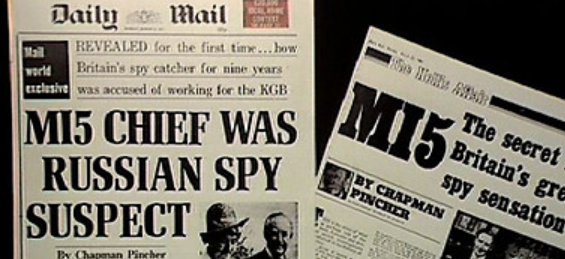
Curtis' post looks at some MI5 and MI6 history and is not impressed. From the post, E.P. Thompson on Chapman Pincher, a journalist :
"A kind of official urinal in which ministers and intelligence and defence chiefs could stand patiently leaking."

Bikes are fun, but they can also cause a great deal of pain, and no need for a crash to experience it.
Three flat tyres this weekend.
First was at the bottom of a hill as a cycled down the road to a supermarket on Saturday morning. This was a really loud BANG! and my front wheel went soft. So I wheeled the bike back home (luckily only about ten minutes) and fixed it with a new inner tube I had spare. Painful as usual getting the tyre back on the wheel.
Folded the bike and put in my hallway. An hour later ... BANG! again. This is with the bike unused, folded.
So, strange - off to the bike shop round the corner (two minutes) and bought a couple of new Schwalbe inner tubes and a new Schwalbe London Marathon tyre. I managed to (just) get the tube and tyre on and pumped it up. Tested in the afternoon and all seemed well. Folded overnight.
Sunday morning, as I got the bike to go out and felt the front tyre, it was flat. I'm about ready to bash my head on the wall now ...

Got the tyre off and checking the tube. Tube seems fine - just flat. Checked with a bowl of water and see no air escaping. Checked again. Tyre seems fine, nothing stuck in it, no tears. So, decide to put the tube and tyre back on the wheel - and had a nightmare getting it in place. Skinned my palm in the process but finally managed it after almost giving up. Once on, I took the wheel round to the bike shop again and let them do a sanity check on it themselves (i.e. leak test, inspection etc.). An hour later I returned and they reported it all looked fine. Not sure what to make of it.
So, we'll see. how things go. I used the bike this afternoon again and it's been okay. At least I got this trouble at the weekend as I hate getting punctures on the way to or from work during the week.
It's been an eventful weekend in other ways as well. Saturday evening dinner preparation involved chopping up some red bird's eye chillies. I've had some bad experience with chilli's in the past so am usually careful about washing my hands afterwards. I did wash my hands but obviously not enough because after rubbing an eye, then (somehow) the other eye, I ended up on my couch unable to open either for about fifteeen minutes as my eyes were closed and burning ...
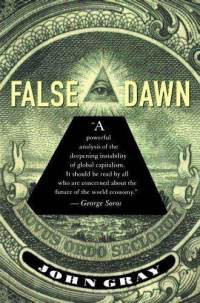
False Dawn, John Gray 1998.
As a subscriber to The Economist magazine, John Gray's 1998 book is an uncomfortable read: the main targets of his skewering are such Economist icons as free markets, liberal democracy and much of the Enlightenment project itself. Gray predicts the implosion of the financial system and describes the future as being one of many competing, and very different, capitalisms than the one the "West" has tried to spread around the world since the Second World War.
The book is challenging to many preconceived notions of the way the world works and what the future holds, and that makes it very thought provoking. Now that we've had a major financial inflection point (I could say crash), the book was worth another read.
For an even more thought-provoking and challenging book by John Gray, I've also read Straw Dogs. This book needs a re-read and then a post itself.
From the Postscript synopsis :
False Dawn argues that a global free market is not an iron law of historical development but a political project. The deep flaws of this project have already caused much unnecessary suffering. Yet a global economy modelled on Anglo-American free markets is the avowed goal of the International Monetary Fund and similar transnational organisations. Global markets are engines of creative destruction. Like the markets of the past, they do not advance in smooth, steady waves. They make progress through cycles of boom and bust, speculative manias and financial crises. Like capitalism in the past, global capitalism achieves its prodigious productivity today by destroying old industries, occupations and ways of life - but on a scale that is worldwide.

If you want to learn something and actually retain the knowledge, there's no point cramming - extensive and lengthy periods of solid study. You might manage to pass an exam, but after a few weeks or months (let alone years) you forget most of it. I speak from personal experience!

A post by Peter Evgan on using flashcards for learning reminded me that I really should do a post about this as well. I've been using the same application Anki as an aid to learning - and more importantly, remembering what I've learned.
Anki is a program which makes remembering things easy. Because it's a lot more efficient than traditional study methods, you can either greatly decrease your time spent studying, or greatly increase the amount you learn.
The secret to something like Anki is being asked a question (e.g. on the front of a "card") and trying to recall the answer (written on the back of the "card"). This act of recall (active recall testing) strengthens your memory. Another important element is something called spaced repetition: spreading the questions over time with a schedule to repeat based on how well you do in recall. This schedule, and the feedback you give on your recall, reinforces the memory and stops the knowledge fading away.
There's a real science and lots of research behind the spaced repetition study method, enough to really hammer home its utility. Some reading :
- Memorizing a programming language using spaced repetition software
Ignore the "programming language" title as this is generally applicable. - The 20 rules of formulating knowledge in learning
As Derek Sivers says in the first link above :
.. memory research shows that the most effective and efficient time for a new fact to be remembered is right before you were about to forget it.

A tool like Anki tracks your learning and calculates the best schedule to reinforce the memory. I've been using it to teach myself the Vim text editor and it's helping enormously,
However, the key to this technique is creating the cards. You have to be a little careful here and make sure you understand the fact (or knowledge) you're setting down on the card.
Anki makes this all much easier. Not only is it free, it works on Windows, Mac, Linux, Android and iPhone. And another key feature is that you can synchronise the Anki state across all your devices.
The Anki manual introduction explains the system and describes why it works so well. I recommend you have a read and try it out. There's always something worth learning.

The last book I read was on paper, as is the current one. It's not a large paperback, so I'm not finding it too unwieldy to carry around compared to my Kindle, but I do miss one thing. On the Kindle you can select a word, press with your finger and pull up the dictionary definition. For those words you come across that you don't know, this is a great feature. Can't do that with a real book!

A while ago, I switched my Linux desktops from Gnome 3 to XFCE. I've now switched to KDE. Not because there's anything wrong with XFCE: I just wanted a change.
This is a big turnaround for me however because it is not that long ago that I would have sworn never to use KDE. I last tried it over 10 years ago and thought it had a lot of very rough edges, plus felt and looked "cheap". Alongside too many half-baked "K" applications and a ridiculous number of configuration parameters and settings, a significant part of it didn't work very well.
It's completely different now and the Debian Wheezy version I'm using (KDE 4.8.4, a few versions out of date now) not only looks fantastic but almost all of it works as expected.
I've had it crash once whilst messing with a particular desktop setting, but it restarted itself automatically and carried on from where it left off. In comparison, I booted Gnome 3 a few weeks ago, just to have another look, played with the ALT+TAB/ALT+` switching for a few seconds and it crashed the desktop. Unlike KDE, it didn't recover but logged you out, losing everything.
The desktop still has a lot of settings to browse but the control panel makes sense and it all seems properly integrated. There are still a few areas I don't properly understand, KDE activities being the main one, but you can ignore them until you feel like having a better look. Virtual desktops work as usual.
All in all, I'm really liking KDE. The developers are doing a wonderful job and the QT toolkit gets better and better. Definitely worth a look.
For people that want to have a play themselves, you can download a KDE live DVD (e.g. Suse do KDE well), boot from it and play without affecting or changing anything on your PC.

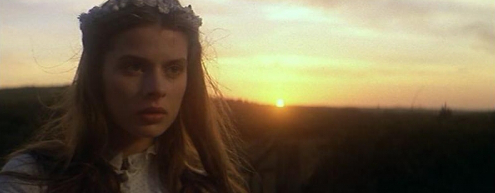
I finished Tess of the d'Urbervilles last Saturday afternoon, lazing about on Clapham Common on a lovely sunny afternoon in SW4. The Common's the nearest to a rural idyll we have in these parts.
Hardy's classic is a beautifully written book with much lyrical description of the English countryside and the people working in it. It's not the usual book I would read but perhaps a vague memory of Nastassja Kinski in Roman Polanski's 1979 film Tess (above) spurred an interest. Now I'll need to see the film.
Things begin with the traditional May day dance that the women and girls do every year and the book has a lot of this sort of disappearing country tradition :
And as each and all of them were warmed without by the sun, so each had a private little sun for her soul to bask in; some dream, some affection, some hobby, at least some remote and distant hope which, though perhaps starving to nothing, still lived on, as hopes will. They they were all cheerful, and many of them merry.
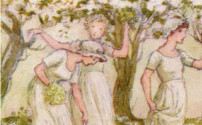
This sort of poetry infuses the book, with rich evocations of a non-existent world now. The machine (engine) might be rare but it has started to make its rumbling noisy presence felt. The rustic charm and Hardy's occasional written dorset dialect reminded me of the book Precious Bane by Mary Webb, something I haven't actually read but heard, as a superb BBC Radio adaptation a few years ago. Yet another book I need to add to the reading list.
A lot of the real power comes from Hardy's unflinching (for the time) look at the realities of working lives in the countryside. These are hard lives for men, women, girls and boys, with a lot of back-breaking work and hardship. No unemployment, health or housing benefit here. Tess is very strong willed and she's proud, and she also has a great joy in life that shines even at low points. It is this that makes you love her company so much.

Somewhere in Dorset
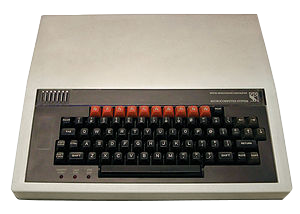
In 1981, the BBC released a personal computer, the BBC Micro.
Although fairly expensive, they were quite popular - even more popular in schools and colleges (which got subsidies for them). This machine might have been responsible for the start of many (perhaps most) computer departments in schools!

There's a great YouTube video online from "Computerphile" called Original Elite on the BBC B that really takes you back to the "golden" age of the hobbyist computer in the UK. Lots of odd machines coming out like the Sinclair ZX80 (later ZX81 and Spectrum) and Acorn Atom. For the Atom, from Wikipedia :
At the time 256×192 was considered to be high resolution.
Richard Hill, now a physicist, talks in a very engaging way about the computer game Elite, a game that a lot of people fondly recall and one that introduced many to realtime 3D computer graphics. This was all done in 32Kb of RAM only and very little processing power compared to today. Not only does he demo the game (loading off cassette tape!), he also shows off a game he wrote himself inspired by it (coding in assembler, later C). Programming was much harder work in those days.
One thing he mentions near the end is that if he was starting out now, he might never have got into programming his game because of the huge number of distractions that make up the modern computer experience. Yes, we have much more power and they are much easier to use, but we also have a massively expanded number of distractions: emails, notifications, tweets, alerts, posts, streams, chats, messages, funny videos. The list goes on. The internet, for all its amazing usefulness, can also be a real time-waster.

It's hard to imagine the enthusiasm and joy this early tinkering can bring to a youngster. This early spirit is something that both the Maker Movement and the Raspberry Pi Foundation are trying to encourage again.
The Raspberry Pi (right) is a real computer and much more powerful than the BBC Micro. Complete with built in distraction though!

A provocatively titled post at Priceonomics called Is Wine Bullshit?.
That's a pretty good hook to draw you in, one reason being that there's already a little niggling feeling at the back of your head liking where this might be going.
A bit embarrassing.
There's much more like this, and it's hard not to feel a little schadenfreude as the author details them. But the article also touches upon how easily our taste senses can be fooled and how frail they can be. Easily fooled by simple expedients like a bit of colour added, rather like the red food colouring in the white wine.
I like a glass of wine but can't tell the various grapes apart, or know what region they're from. A lot of wine tastes fine to me but I can easily tell a bad one and I remember not to buy it again.
I've bought (so called) good wine, spending more than I normally would, and not been greatly impressed: I'm often more impressed with cheaper stuff. I've sometimes thought that this was due to my untrained palate and the need to cultivate it more. This is not something completely unheard of as I didn't use to like whisky until I "trained" myself a little. Maybe time for a bit more training!
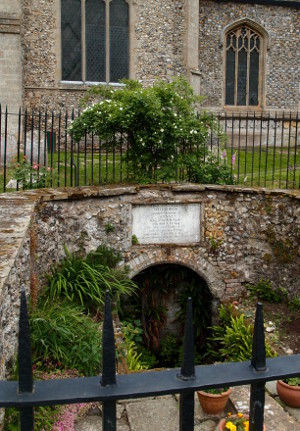
I was wanting to visit Houghton Hall and see a few paintings from artists like Velázquez, Rubens, Rembrant and Poussin. These pictures are over here on loan from The Hermitage in Russia, the pictures having been sold by Sir Robert Walpole to Catherine the Great in the 18th Century.
Unfortunately, the exhibition is sold out for almost all the open days. I'm kicking myself for not booking weeks ago. It just shows that galleries and museums are full everywhere, not just in London.
Old churches might have to do for now. East Anglia (Norfolk and Suffolk) has hundreds of old churches, many medieval, many over 1000 years old. This is St Nicholas, Dereham in Norfolk.
One of the unusual things here is Withburga's Well in the church grounds :

The church as it stands is Norman, from the 12th Century.
The centre of Dereham itself and the High Street has seen better days: it seems to be mostly charity shops, take-away restaurants and hairdressers. Much like many high streets now. But round the corner and behind the main roads there are some very pleasant and good looking buildings and greener areas. Away from too much traffic.



The Royal Academy have their annual Summer Exhibition at the moment, not that we seem to be having a summer this year.

A great show. Art from floor to ceiling and a massive number of things to see, from paintings and drawings, to sculpture, photography and architectural designs and models. I actually wished I'd had some binoculars when I strained to see a bit of detail on some pictures hanging high up. It's good to see so many different works from so many different artists.
One room was devoted to six large Grayson Perry tapestries called The Vanity of Small Differences: very impressive and funny although slightly depressing as a window on the modern world.
 Above: Grayson Perry, The Adoration of the Cage Fighters, 2012
Above: Grayson Perry, The Adoration of the Cage Fighters, 2012
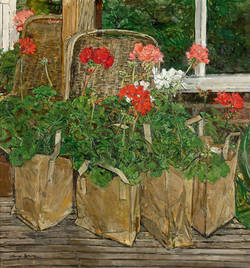
Olwyn Bowey RA, Shopping for the Garden
I only spent a couple of hours there but could have spent all day. It would be great if the Academy allowed re-entry like the Queen's Gallery does.
I also wish it was easier to link to a few pictures I really liked but the RA seems very keen on securing the art, so no photographs inside and few found online. One artist I was unfamiliar with was Olwyn Bowey, who paints rough but detailed pictures of plants, and plant arrangements. She has a few paintings on display, all impressed me.

Bill Jacklin, Snow, Times Square
Another was Bill Jacklin, who paints a diffuse form of light and movement, perhaps Grand Central, or Times Square in New York. Very evocative and atmospheric.
I got to the show on opening (10am) on a Friday and it got quite busy by 10:30. A very popular show and I bet it can get a bit crowded at weekends.
From The Economist :
Six major estates own large parts of central London (see map). They have done so for centuries; the Grosvenor family first acquired land in Mayfair and Belgravia in 1677. Until the 1990s most of these estates were run in a broadly similar manner.
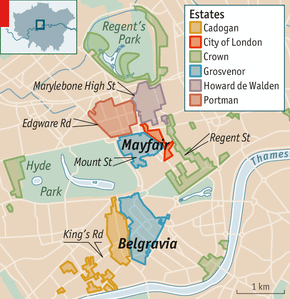
Regent Street is owned by the The Crown Estate, a "property portfolio" that traces its origins to the The Norman Conquest.
Over the course of the centuries, large estates have tended to be broken up to some extent, especially those that relied on farming, or some other industry in decline. But if you were lucky enough to have seized, been gifted or purchased land in an up and coming urban centre like the west end of London, you have been very lucky indeed.
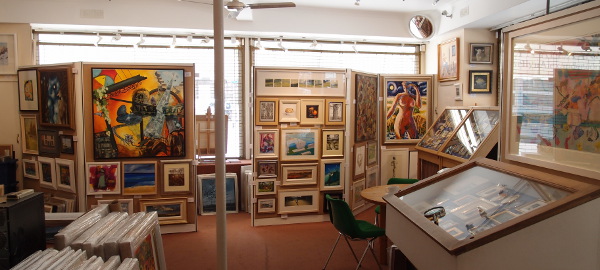
I went back to the Llewellyn Alexander gallery to have a look at their Not the Royal Academy show. I love the smaller gallery because you can get much closer to the art, and there's often a lot more of it, packed into a smaller space. If you get there early, as I did, you miss crowds as well. Paintings everywhere.
All the works got a rejection for the Royal Academy show, but as you will see, not for any lack of skill. In conversation with one of the LA gallery proprietors, even they have to reject some, which is always a difficult thing to do: that would be a double rejection sadly. This is usually purely due to the lack of space or a piece being too similar to others already chosen.
I'll have to go back for another look: lots to see. Some favourites are below (all on sale).
Summer at East Hampton
Acrylic on Canvas

Summer Evening, Ballintoy
Oil on Canvas

Fishing on Tal-y-Llyn
Watercolour on Paper

The Cliff Edge
Oil on Canvas

At Home with the Cats
Oil on board

Lands End,Summer Evening
Watercolour on Paper

Brighton Pier
Oil on Board

Towards Dartmouth
Acrylic on Board

The Llewellyn Alexander Gallery has a show on at the moment called Not The Royal Academy. I passed by this evening on the way home from work and stopped to look in the window. I'll be going back to have a proper look as soon as I can because so much looked great.

Check it out - four pages of paintings to browse and good stuff on every one.
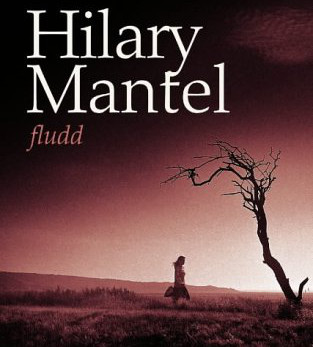
A Hilary Mantel book and one of the best I've read. But what to make of it? That's a little harder. This is an easy book to read and one I enjoyed immensely, but it was obvious there was a lot more under the surface here.
I'm not one for the "humorous" book at all, but there were times that I really did laugh aloud reading this. The rural catholicity of the story and situations conjured up by Mantel were almost Father Ted territory. And as she says in an interview after the book, the story has a child-like quality, maybe wondrous and at times naive, but very affecting.
The novel's language and style is pure Mantel though. A simplicity of style, the usual conciseness of the language and the beautifully constructed sentences. I can't really find fault with the book.
So, what is it about? A stranger arrives in a small northern village and his presence effects changes in the ossified community. As the book reminds us in an afterword, Robert Fludd was an English alchemist and the alchemist's aim was transmutation. Superficially, this was base metal into gold, but the occult transformation desired was always expressed as something spiritual. As Mantel points out in the afterword, catholic children are already infused with such a "magical" transformation as part of the doctrine of transubstantiation: the miracle of the bread and wine turning into the real body of Christ.
Despite the above, the book is not heavy going in any way and is a pleasure to read. Very funny as well. I think I'll look forward to reading it again in a year or so.

The Duveen Gallery at Tate Britain is not nearly as large as Tate Modern's Turbine Hall but it is still pretty big and a very impressive space.
This space is currently being used to show Simon Starling's Phantom Ride on a big screen hanging in the center of the hall. It is quite an amazing show but perhaps the first thing you notice is the sound: a very low rumbling whooshing noise that is quite unsettling. This is matched on occasion with the visual image, such as a swooping 360° around Epstein's nightmarish Rock Drill.
Starling seems to have used the latest type of 3D modelling and computer controlled camera control to build a virtual Duveen Gallery within which he can place selected Tate pieces. At one point bomb damage from the Blitz is modelled, before the camera and models swoop around and display a new artifact (perhaps a Picasso, or a Warhol).
You can see some of the video at the Tate web site (or click the image below). But a (free) visit is highly recommended.
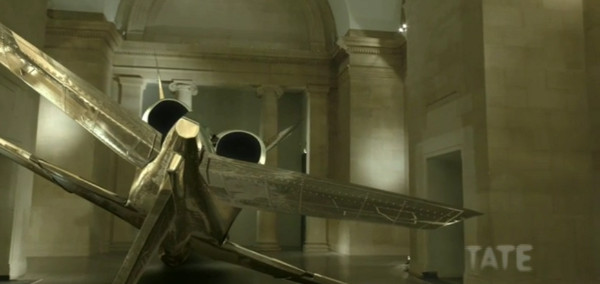
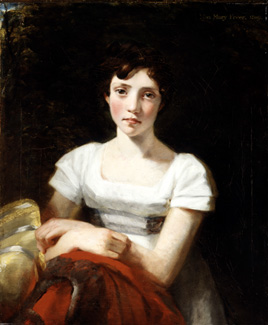
Continuing with the Constable theme, he's mostly well known for his landscapes, but he also did some very good portraits. Including this one. For a little background on Mary Freer, see the NYT.
Right: John Constable, Mary Freer. 1809Salisbury Rainbow
The Tate is showing Salisbury Cathedral from the Water Meadows by John Constable , a painting recently purchased for £23 million. The Tate's not far from me, so I went up to have a look. I was in the place early (opens at 10 am) and there were not many people around. The cathedral website has some more background.
I like the picture, and like Constable in general, although I used to have trouble when I first saw how dark the paintings were. I knew he painted outdoors and was famous for the lightness, and play of light, he captured, but the palette was always quite dark. Now I know that I was biased, having come to Constable from the "future" via the impressionists. Going further back to the Dutch landscape painters as well.
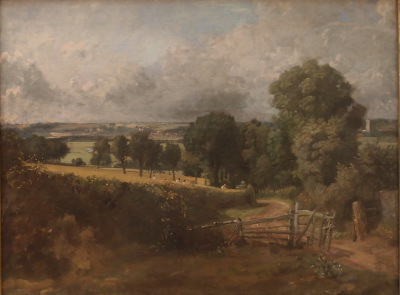
Fen Lane. Apparently the route Constable would take walking to school, he would have known it well. This is the way the countryside used to be, no motor cars, trains or litter in evidence.
Have a look at more of his work.
Tate Britain is a superb gallery and has some beautiful work by all sorts of artists. I took the opportunity to have a look at the Blake gallery as well this time. I hope to write a little more about the visit later.
Below: William Blake, Elohim Creating Adam 1795/c.1805

I knew of the book, and knew it was highly rated, but I actually decided to read Cloud Atlas after seeing the trailer for the film online. Not a usual route I'd take.
David Mitchell's book has received a lot of very good reviews and is also considered quite literary. Sometimes this just means a good vocabulary and well structured sentences but it can also mean a book turns out a bit abstruse.
I'm very glad to say that this was not the case with Cloud Atlas, and I enjoyed the book a lot. I knew very little about it actually, other than it was considered a bit harder ("literary") and had an unusual, multi-story structure jumping between different timelines. Perhaps the word challenging is more apt.
There are six stories, each in two halves that are in a mirrored order, such that we start and end with the first, the voyage of a 19th Century American notary in the South Pacific. Each story is set in a completely different period, from the 19th Century, to the 20th and off into the far future. Wikipedia (watch out, big spoilers there) calls the film (which I haven't seen yet) science-fiction and I found the future (and far future) episodes in the book the best.
The story of Sonmi 451 is a beautifully told tale of a young clone and her education into the realities of life in a future Korea. As a "fabricant" she is a slave and the world she is "born" into both autocratic and consumerist to the extreme. This world bears some resemblance to Huxley's Brave New World, one of my favourite books, and is chilling but fascinating. The story that follows is set further out, in a post-apocalyptic world where the vestiges of humanity cling to the planet by their fingernails.

Every story engaged and entertained me, and if any dragged at all, you know there's another along shortly anyway. There's a deeper meaning here but I'm still working that out, other than seeing the more superficial warnings against consumerism, environmental damage, racism etc. What I'll remember most is the excitement and empathy generated for a vat born clone, escaping her pre-ordained fate for a more immortal one.

Amazon, the online store, do a lot more than just sell books and computers. They also created a massive cloud computing platform to enable their own huge operations. They sell it as a service to everyone else, a so-called Platform As A Service (PaaS) provider. I've been meaning to take a closer look at Amazon Web Services (AWS) and I think now is a good time.
I actually created an AWS account four years ago but never actually used it. I think I was too busy probably, and perhaps also baulked at adding a credit card to the account at the time. I've decided to reactivate it and have a play in Amazon's free tier. This lets you use a few services for free for a year, as long as you use a small system and stay within certain resource limits.
So, I have a test EC2 instance up and running, Apache listening and a single static web page being served. It's using an EBS volume and ... well, the alphabet soup soon kicks in here. Awash in a sea of TLA's. This is one of the reasons I wanted to have a play, to learn about some of the terminology, including how to operate and manage things programmatically. I've created and used a number of virtual machines on Linux, and use quite a few now: this blog is written inside one, and hosted inside another for instance. So one of my questions is to see how different AWS is to the VM's I run now.

Dulwich Picture Gallery has a great show on at the moment called Bright Land, with work by their Artist in Residence, Canadian Liz Charsley-Jory. She's been inspired by the Canadian Group of Seven artists, who had an exhibition on at the Dulwich a year ago called Painting Canada, and created some beautiful pictures in a similar vein. I loved the show a year ago so much that I bought the book.

Most of her work is painted in oil pastels.
Unfortunately, the last day was Sunday (hence the trip) but her web site shows more of her work and I would recommend a look.
The exhibition today was free but I paid to see the Murillo exhibition afterwards.

This is a monumental (i.e. large) black and white charcoal drawing, maybe a masterpiece. Sold.
The artist was in the room, doing a bit of painting, and I took the opportunity to tell her that I liked the paintings (as did some other visitors). I would imagine it was a successful show and I overheard her saying she was doing the "Christmas cards" this year. I'll look out for them.
I really love Dulwich Village but couldn't afford to live there. Like many places in London, it's beauty is only minutes from much less salubrious areas ...


I worked round the corner from Spitalfields market near London Liverpool Street ten or so years ago. A lot of history in this area, some of it notorious. I made a return visit at the weekend and saw a lot of changes.
For one thing, it now has a goat ...
Right: Kenny Hunter, goat sculpture

Christ Church, designed by Hawksmoor and built between 1714 and 1729, is still there and still striking.
Left: Christ Church, Spitalfields.
SpitalFields Market was bustling and full of fashionable and trendy stalls and shops. Many seem to sell very similar things though, as if there's a "craft" factory somewhere churning out the usual stuff. Still worth a visit because there's almost always something interesting and/or different to see or find. Compared to some high streets now, whether of the delapidated variety (e.g. Oxford Street, East) or the mundane standard variety (many towns), a market like this is much more stimulating.
Below: Spitalfields Market


Good to see that Debian 7.0 Wheezy was released last week after a 10 month release freeze. Some people think this is far too long, myself included.
Russ Allbery and Lars Wirzenius have written up a proposal to improve the Debian release process, with much inspiration from the agile development method. In short, they want to promote the Testing distribution to a state that it is always releasable, at least to the extent that the entire release process takes only 2 weeks to a month (or so, at most).
In brief, the proposal covers :
- Keep the Testing distribution as close to releasable as possible, with more constant attention to bug fixing (especially release critical bugs).
- More constant and automated testing done of the distribution.
- Focus on ensuring the right core packages are ready and releasable, being less concerned with those packages deemed of secondary importance.
The idea that Testing be changed to either a rolling release or to some form of constantly releasable distribution comes up regularly e.g. see Tanglu and CUT. Allbery and Wirzenius are very well known Debian "old-hands" though, so may be able to make more of a impression on the project. I hope so, but Debian is a very democratic and distributed organisation and consensus is hard to build on this type of question. Debian is also well known for its focus on stability rather than freshness, and stability is an admirable goal. I think the process Allbery and Wirzenius describe can speed a release without sacrificing this by optimising and focusing resource better though. Automation may be the key.
Finally, I really appreciate all the hard work done by all the Debian developers and contributors - I've been running Debian Linux on all my machines for a few years now, a very satisfied user. Like many, I installed Testing many months ago but the long stabilisation period is a bit of a drawback. Right now, it's fine but fairly soon it will start to seem slightly stale. This is less of a problem for a server but more of one for a desktop. A way of optimising the release and update process would be very welcome.
The current banner photograph was taken from a moving train between Edinburgh and Inverness in October last year. I always loved the wild beauty of the landscape in the highlands and the mist here captures some of its chilly but beautiful and awe-inspiring nature.
Very Old Jigsaw

The British Museum has a room devoted to the Sutton Hoo Anglo-Saxon ship burial discovered in Suffolk in the late 1930's. Dating from the 7th Century, many beautiful artifacts were found and have been restored over the years. One of the most famous is the Sutton Hoo Helmet.
On the left, a reconstruction of the helmet. On the right, how it looked when it was found.


The reconstruction is described here and it is clear how hard, and how much skill is required when rebuilding such an old and decayed artifact. The original attempt was dismantled in 1968 after further research determined it was inaccurate.
This is just one part of a lot more to see here, including some intricate and beautiful jewellery.
More detail about Sutton Hoo can be found in a good article at Current Archaeology.
Luckily, I've only ever been on "stage" back in the mists of time in the school nativity play, where I might have been a shepherd. I think "shepherd" is the role little boys get placed in when they're obviously not star material.
I've not had to do much talking to groups, let alone audiences, but enough to know that I'm not good at it. I tend to clam up and have a severe attack of stage fright with pretty much everything getting thrown out the window: memory, speech capability and heart rate. It's a thoroughly unpleasant experience not sought after!
However, I know that many people overcome this fear, and I'd love to manage to do that myself. Mikael Cho's wriiten about his experiences and how he tried (and succeeded) in fixing his own stage fright. There is hope if you try: small steps first I think with very good preparation.

What happens to our brains when we have stage fright: The science of public speaking
-- Rousseau, via the Declaration of the Rights of Man and of the Citizen
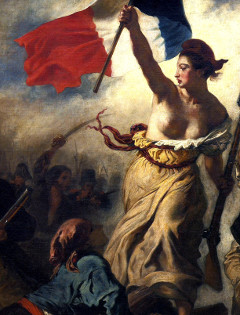
I'd already finished reading Hilary Mantel's Place of Greater Safety before discovering it was the first book she wrote (but not the first published). In the interview that accompanies the e-book, she says it took her five years to write: the tremendous amount of research and detail would attest to this.
Although it has quite a slow start, and a fair number of characters and places to follow, the pace quickened as the "revolutions" happened. As the book neared its climax, I was sad it was ending.
Liberty Leading the People. 1830.
A few years ago, I discovered how great a well researched and written historical novel could be when I read First Man in Rome by Colleen McCullough. This book was not only a pleasure to read, it taught me more about life, death and customs of ancient Rome than any school class or textbook. Like McCullough's book, Mantel's close research immerses you in the events. The story is of three friends experiencing the upheaval of the French Revolution: no ordinary people these however, but Robespierre, Danton and Camille Desmoulins. These three are at the heart of the book as they sat at the heart of the revolutionary drama.
I was unfamiliar with Desmoulins and he is perhaps the main character in the book. Complex, funny and good looking but also a hateful figure, his journalism and speech writing play a large part in stirring things up. A radical: but someone more radical always comes along. A childhood friend of Robespierre, their dynamic creates a massive central tension resolved through destruction.
Although not quite as polished as her latest books, the writing is concise and sharp. It can be hard reading a book where many, if not most, of the main characters are not only unlikeable but quite nasty as events roll forward. However, this can be seen as the mark of a great writer. It is also chilling to enter a world where justification for mass murder, industrial extermination and casual brutality is so easily expounded. Each of the main characters arrives at such a place, some trying to extricate themselves from the consequences at the end. Like them or not, you do care about what happens to them in the end, even though the tragedy's end is clear.
Revolutions then and since have had woeful consequences and you can trace some of the calamitous ideologies of the present back to these times. The triumph of reason can lead to horror and reasonable men lead us all to hell.
An article in The Telegraph on Friday covered a familiar topic: just how bad sugar can be for us. It's called Sweet Poison to drive home the message.
Emphasis here was on addiction as the driver, so nothing completely new to people familiar with recent research and articles about food reward and brain/body chemistry. Sugar's in almost everything, and one of the worst aspects is that it can be hard to avoid because it's hidden (that is, not clearly stated on the label).
Dr Robert Lustig, famous for his YouTube hit, Sugar: The Bitter Truth has a book out and is quoted here :
Lustig explains that instead of helping to sate us, some scientists believe that fructose fools our brains into thinking we are not full, so we overeat. Moreover, excess fructose cannot be converted into energy by the mitochondria inside our cells (which perform this function). “Instead,” he explains, “they turn excess fructose into liver fat. That starts a cascade of insulin resistance (insulin promotes sugar uptake from blood) which leads to chronic metabolic disease, including diabetes and heart disease.”
Regarding High Frustose Corn Syrup, an especially egregious ingredient in some "food" :
As a liquid, it is also easier to blend and transport. In particular, it is used in low-fat foods (which would otherwise taste, says Lustig, “like cardboard”). His theory goes a long way to explaining why the low-fat diets which rose to popularity in the Seventies have coincided with a rise in obesity and related illnesses.
From David Gillespie, author of a book called Sweet Poison, we hear :
The average Briton is consuming more than a kilo – 238 teaspoonfuls – a week"
Really? So can you account for this? Where is it all coming from? Hidden sugar.
And as far as an addiction :
The more he learnt, the more Gillespie was determined to do something about his own eating habits. “I stopped eating sugar and immediately started losing weight – without adjusting anything else about how I lived.”
For Gillespie, the weight started dropping straight away, but the sense of addiction took a little longer to go: “At the two-four week mark I noticed I was no longer craving food and in particular I could leave things which I would have found difficult to bypass before.
Like any addiction, to break free requires discipline and it is easy to lapse and fall back into the same habits as before. A modern supermarket is well designed to tempt you into breaking any vows you've made ....
So, here I am messing (again) with the blog fonts, wondering about sans versus serif and legibility and look. There are so many clients now, and different resolutions, that it's hard to take them all into account.
I was using a Google web font called PT. Now I've actually switched to basic Times New Roman and feel like I'm some sort of web neanderthal! But playing with CSS (size, height etc.) makes it seem very clear and legible to me. Let me know if not.
I pencilled this into my calendar ages ago but only got around to visiting last Thursday. I'm very glad I did. I was tempted to queue for the new exhibition Life and Death: Pompeii and Herculaneum before the crowds get overwhelming, but in the end didn't feel like it and went to Room 90 instead.
The smaller and quieter exhibition in Room 90 is In Search of Classical Greece.
In Search of Classical Greece displays the drawings and paintings of Edward Dodwell and Simone Pomardi from their trip through Greece at the start of the 19th Century.
Their trip took place well before the Greek War of Independence from Turkey (between 1821 and 1832) and shows a Greece that has now changed almost beyond recognition. From the Britsh Museum's web page :
Some beautifully detailed paintings in the display, shown with other artifacts (such as some ceramics, final bound volumes) alongside interesting descriptions and history. In some way you can thank Napoleon for this, since the closure of the usual Grand Tour routes in Italy forced people like Dodwell to look elsewhere. Greece proved a very stimulating substitute and the rest of the century can really be described as "sensational" when one considers the finds at Troy, Mycenae and Crete. It's hard getting too much of this stuff sometimes.
Now for the Pompeii show ... once I find a decent spare slot ...
Via Hacker News, Zach Shapiro has some thoughts on how to learn to program. One of the points he makes is about Code Academy, a resource I recently wrote about.
Zach thinks CA is a less optimal way to learn because it's all done inside a web browser and doesn't teach you how to set up a real development environment i.e. the tools and resources you need to program properly standalone.
This is a good point and is something that Code Academy should probably try and incorporate into their coding tracks. Of course, the track I've been through, Javascript, is native to the web browser and so has less need for an "outside the browser" environment. But a language like Python is not browser-native and so would benefit from a guide on how to set it up. A language like C++ more so.
Learning some basics using a simple browser based environment can definitely be a useful start though.
If you're interested in learning to code, the post is worth reading.
Vim is a great text editor and I'm constantly surprised (and amazed) by the sort of things I discover you can do with it.
The latest surprise was :
if you place your cursor on a number and press Ctrl-a, the number is incremented by one. Ctrl-x on a number will decrement it by one. Further, modify the command with a count to increment or decrement by count i.e. 6 Ctrl-x decrements 6 from the number under the cursor.
Vim is full of odd little features like this.
.. shame if anything happened to it ...
The table below is data taken from the European Central Bank via the blog Tax Research (who in turn got it from Bill Mitchell's blog). It essentially shows the size of a country's financial industry as a percentage of GDP. I've annotated the most oversized with red dots :

Well, there's something wrong here isn't there. Cyprus has crashed and the EU has not dealt with the situation well. Cyprus has a financial sector over 8x the size of it's GDP and is also the largest outside investor in Russia. As Richard Murphy says, the situation is absurd on the face of it.
Leaving aside Luxembourg with a massive 20x finance to GDP ratio, next up might be tiny Malta, with 7x.
And the UK also has a big problem, at 6x.
These are worrying numbers and I don't think I'm alone in worrying. Some might say that to call this situation an "existential threat" would be a big exaggeration, and I would have agreed a few years ago. But now? The problems in Cyprus are not a bolt out of the blue but have been known for a long time. Even I have been aware of the it for at least six months. So what does the last minute panic and mess tell us?
And this morning, a business news story on the BBC about trouble brewing in Slovenia, a country that does not figure too badly in the table above. Turns out bad loans and a shaky financial sector. Who knows what is in store this year?
Speaking of online education, as you might imagine the field has been particularly attractive to people in the computing industry. Those that build and design the internet and all the various programs and services that run on it have been early adopters of the technology. Podcast style videos for instruction, demo and training are fairly common and are often very good. They're much easier to create nowadays as well.
One of these new companies is called Code Academy.

Code Academy run various courses (tracks) on (generally) web oriented technologies like HTML authoring, the Javascript and Python programming languages and various other things.
I joined up a few weeks ago to take a look and, over a couple of weeks, worked through their Javascript track.
The course starts as a very basic introduction to computer programming itself but builds up to decent coverage of topics like functions and objects. What makes these courses good is the interaction and encouragement the system gives the student. This is all programmed into the web site code ofcourse but makes the experience much more engaging.
Every track is broken down into sections, further sub-divided. A key here might be that the exercises make up a great deal of the instruction: a short introduction and explanation of a concept leading very quickly to hands-on coding.

For the code editing, the web pages have a built in Javascript editor with syntax highlighting and basic error checking. You can run the code immediately and see the results in a console beside the editor. In addition, there are question and answer forums for each section so you can read what others are saying (and help out if you can).
To keep you interested, encouragement is given by earning "badges" and you get emails praising certain accomplishments. These might be completing a section or working on the course for multiple days in a row. This sort of immediate feedback is one of the key elements of a course like this.
So I earned a few badges ... :-)

I still have some way to go before I'm a Javascript Ninja though!

MOOC stands for Massive Open Online Course, a bit of a mouthful and not a particularly nice word, but something that will be a very important component of the education landscape in the future. Students, teachers and parents should be watching developments here very closely.
In translation: teaching over the internet. Courses covering everything from maths to art and using all the latest multimedia and web-based technology.
From the Khan Academy to a multitude of universities and colleges putting courses online (often free), things are taking off. In the USA, prestigious institutions like Stanford, Harvard and MIT have blazed the trail but there are many more, all over the world.
Open Culture has a list of 700 free online courses. Everything from Ancient Greek History at Yale with Donald Kagan to Reading Marx’s Capital by David Harvey at City University of New York.
Also check out Coursera - "Take the world's best courses, online, for free".
The modern web environment is an increasingly rich one but there are many challenges ahead of a non-technical nature. These will include how grading and certification will work. To see proper recognition of online qualifications we will need to ensure some sort of reliable quality standard and a way to properly compare grades from very different institutions, perhaps across continents.
In the future, the hope is that the cost of education will fall significantly and quality rise. Great teachers will no longer be available to only a privileged few but can, if allowed, reach huge (massive online) audiences: education can be interesting and exciting in the right hands.
This will all take some time to shake out and there are many vested interests that might work to obstruct online education. Like with a lot of things the internet touches, some wrenching change is on the horizon.

Lots of people moaning about this and I have to add my voice.
Like many people, I was very disappointed this week when Google announced that their Reader RSS feed reader app will be killed in a few months. I use it on a daily basis, both on my desktop and on my Nexus7 tablet.
I like the fact that it has a simple, plain web interface and it syncs to all my devices (desktop and tablet). There are few glitzy features, and the "social" aspects are easily ignored or hidden.
I don't think much of the reasons Google state on their official blog :
usage of Google Reader has declined, and as a company we’re pouring all of our energy into fewer products. We think that kind of focus will make for a better user experience
I hear talk of a "declining" usage but I've never seen numbers. Are there any? Usage seems pretty high given the strength of the reaction to the closure. I also can't see why "resource" would play a big part. How much resource did Reader cost? Not much as far as I understand, and if they mean a recommendations team then why not just reassign and remove this part of the product? According to Chris Wetherell, an "early creator of Google Reader" interviewed at GigaOm :
In addition, Google had a separate recommendations team fine-tuning Google Reader, and those people don’t come in cheap.
This decision has highlighted the problem of "cloud" based apps and services again. Whoever provides them can change or delete them unilaterally. This is especially true of the free apps and services like Reader. Can this sort of thing be considered a little bit evil?
Addendum
Reader is vanishing at the start of July, so to try and figure out a half-way decent replacement, I'm going to try and live without it from now. It will be hard getting used to something new so I might as well get started.
At the moment, I'm trying the Firefox extension Brief. It's very promising.
On the tablet, things are harder. Firefox does not have/use the same extensions. I have not used it much yet, but will try RSS Demon.
I've considered some of the self-hosted options (e.g. Fever, Tiny Tiny RSS) but I'm not sure I want to run a public PHP application just now).

The Courtauld Gallery at Somerset House has a small exhibition on at the moment called Becoming Picasso. It's small but perfectly formed, and a wonderful way to spend some time, for not too much money.

Dwarf-Dancer, 1901
The exhibition covers the year 1901 alone: the year Picasso had his first exhibition in his new home Paris.
You can clearly see the many influences on his painting here, influences that place him right at the heart of the same Parisian milieu portrayed by familiar artists like Degas, Van Gogh and Toulouse-Lautrec. We see similar scenes in the music halls and familiar characters, from the dancer to the ansinthe drinker.
Picasso was a very productive artist and lived a long time, so there's a lot of art to look at. For those that care less for some of the later, more abstract work, these paintings are a very good reminder of what a genius he was. There are some really beautiful paintings here, colourful and impressionistic.
Not only is the gallery cheap (£6), it has a superb permanent collection of some of the greatest paintings in the country, including Gauguin, Rubens and Van Gogh. The paintings are only a small part of a much larger collection that includes ceramics and furniture.
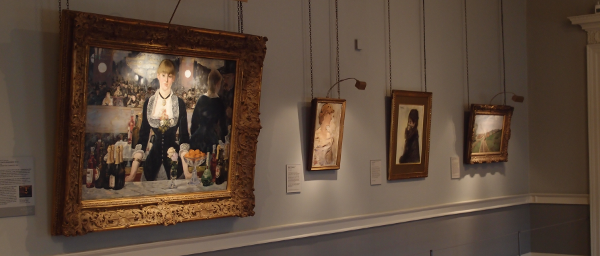
Manet, A Bar at the Folies-Bergère, 1881-2

Pesellino, The Annunciation, 1450-55
They also have some real masterpieces in their collection of Gothic and Medieval work.
Including an Annunciation by Pesellino, from the 15th Century.

A week or so ago, I wrote about the terrible cost of health care in the US. An article on CNN describes a way some might be able to mitigate this by haggling.
The article is called Haggling for health care: Ways to lower your bills and describes how some people have managed to knock a lot of money off their bills :
"If you go in and ask a doctor or hospital how much something costs, they are going to tell you their highest price," Santa said. To negotiate a much lower price "you have to ask."
If you are uninsured or your insurance doesn't cover a procedure, ask if the medical provider would be willing to do it for the same price they would get reimbursed for from an insurance company or Medicare. That could knock about 30% to 40% off of the cost and most doctors and hospitals are open to doing that, he said.
Medical costs can be so high, anything that reduces them is important. Unlike some countries, people in the US and Europe generally don't haggle in shops or markets, and many probably feel uncomfotable doing it. I think this is probably a hang over from times past when people generally felt more a sense of community and trust. A trust that the price is fair and you are not being taken advantage of. Things are slightly different now. Perhaps people need to get used to "asking".
An article at Scientific American,Why It’s Smart to Be Reckless on Wall Street, considers the reward structure in Wall Street banks and concludes that, to many bankers, it makes sense to take very large risks. As Taleb would note, there's no downside.
So, an unhealthy amount of risk, both for the long term future of the bank itself, and unhealthy for all of us if a banking crisis ensues.
Join a business that has an established track record. Start small, building up a few solid years of making decent profits. Do this for six or seven years. It’s called “milking the franchise.” Soon you will have respect and, most of all, expanded limits on what you can trade. Wait for a year when everyone is bullish. Then swing big. Really big. Don’t take judicious risk; take the most risk the firm will allow you. Follow the momentum, piling into trades others are doing.
If you win, since you followed the herd, Wall Street will be flush with cash and you will get paid well, tens of millions well. If you lose you may get fired, but since everyone lost they will understand.
This strategy is certainly not in the long-term interest of the firm, but it’s the smartest strategy to benefit the trader.
We have to make sure that there is a downside when a bank takes big risks, and to the individual gambler/banker making the bet. The risk should be taken by the bank with their own money, not the retail client or tax payer. As the author says, most bankers are doing nothing wrong, let alone illegal, but a minority are. They need to be reined in and the best way of doing that is to make sure the banks themselves have enough skin in the game.
It needs to be greatly in their interest to be more prudent.
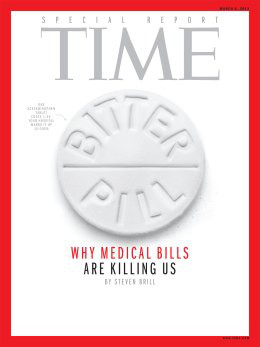
I might have bought Time magazine once in my life (maybe). It always struck me as a magazine with too many adverts and too little content, even if some of it was good. However, an article on their web site investigating the US health care system is extremely good, perhaps of the prize winning category.
The article is called Bitter Pill: Why Medical Bills Are Killing Us and is written by Steven Brill. It is well worth a read.
There are very hard, very troubling issues raised by Mr Brill about the US Health Care system. This has been in the news a lot of course, not only because Obama's health care bill goes into effect next year but because the economics and costs have been seen in stark relief due to the large financial problems facing the country. As Brill says about the "$5.36 billion" spent since 1998 :
That’s right: the health-care-industrial complex spends more than three times what the military-industrial complex spends in Washington.
And before people jump on the idea that this is just "Big Pharma", it's not. This is "pharmaceutical and health-care-product industries, combined with organizations representing doctors, hospitals, nursing homes, health services and HMOs".
These supposed non-profits are run as very large and extremely profitable businesses.
There's a great deal wrong with our own NHS in the UK, as recent troubles have shown (many more where that comes from) but the fundamental structure is right I think. The NHS is a very large organisation and with size comes negotiating power to keep costs down. Everyone is covered. However, in the USA :
According to one of a series of exhaustive studies done by the McKinsey & Co. consulting firm, we spend more on health care than the next 10 biggest spenders combined: Japan, Germany, France, China, the U.K., Italy, Canada, Brazil, Spain and Australia. We may be shocked at the $60 billion price tag for cleaning up after Hurricane Sandy. We spent almost that much last week on health care. We spend more every year on artificial knees and hips than what Hollywood collects at the box office. We spend two or three times that much on durable medical devices like canes and wheelchairs, in part because a heavily lobbied Congress forces Medicare to pay 25% to 75% more for this equipment than it would cost at Walmart.
And this is fundamentally the problem built in to the system. Using some real life people as examples, Brill goes through the medical bill they receive and shows how inflated the costs are - if you are not on medicare or medicaid. Even the insured have to pay massively greater costs. Something that would cost 11¢ from Amazon costs $18 from a hospital (Accu-chek diabetes test strips).
America has to fix this, and from what I understand, "Obamacare" won't do it: I'm glad we have something like the NHS here. If I ever want to travel to the USA in the future, I'll have to be very careful when sorting out health insurance and take good advice. I don't have any health problems just now, but who knows? Chest pains that turn out to be indigestion can lead to a bill for $21,000.


Lovely morning, blue sky if a little cold. I thought I'd bike up to Buckingham Palace and use my Northern Renaissance ticket again (free re-entry).
But once up there, I couldn't see anywhere to lock up the bike and the staff wouldn't let me carry it folded, or put it in the cloakroom. They said there were some bike rails further up and round the next road but I couldn't find them.
What a shame. Apparently the "police don't like bikes locked up nearby" (no doubt due to some sort of "anti-terrorism" fear). This is similar to Whitehall when I visited the Banqueting House last year. Then however, a sympathetic staff member let me fold and stick the bike behind a table inside. I think I might write to the gallery and ask them to see if they can sort something out.
Instead, I went up to the National Gallery (entrance stairway shown above) and looked at some early renaissance altar pieces, with bike locked up directly outside on a bike rail. It's a pity they don't allow photographs inside though.
Definitely worth a visit because I found a room devoted to the artist Carlo Crivelli. Painting at the end of the 15th Century, his paintings are very colourful, very beautiful and (apparently primarily) painted in egg tempera. They have quite an individual style.
 The Annunciation, with Saint Emidius. 1486, Carlo Crivelli.
The Annunciation, with Saint Emidius. 1486, Carlo Crivelli.
Edit: typo
After visiting the Mall Gallery last week and viewing the British Scene, I walked up Charing Cross Road and had a lookin the National Portrait Gallery.
The reason for the visit was to see the newly restored painting of Catherine of Aragon, now hanging beside her husband, Henry.

The NPG web site has the full story of the restoration.
They make a good couple and one wonders as to the likeness, with Henry's quite flat features, and Catherine's almost doll like countenance. Old pictures hanging with a lot of other old pictures in Room 1, The Early Tudors.

The room includes a famous portrait of King Richard III, whose body was recently dug up in Leicester.
An excellent resource on Richard, and his recent discovery, is at the University of Leicester. A good page The search for Richard III - completed that includes video of the dig and lots of scientific detail on the identification.
In the picture, notice how Richard plays with his ring in the same way Henry does. A stock pose for a King.

I'm not really sure what happened, but I cancelled my TalkTalk broadband at the start of the week, got my migration code and am switching to Plusnet, hopefully without a hitch. This will half my monthly cost and perhaps increase my network speed.
I've known that I'd need to sort something out sometime because I've been paying way over the odds for my service - over £24 per month for a 16Mb line. On a good day, I'd get 14Mb, but that was fine by me. I originally joined Nildram, with a 30 day contract and then Nildram ended up being bought by Opal, who were then bought my TalkTalk. This all happened a few years ago now. Right at the start of the TalkTalk switch from Nildram/Opal, they almost lost me when they appeared to renege on the promise to keep my service/package unchanged. It was only a call back from a manager who apologised for the mistake that had me stay.
Inertia and some apathy have stopped me changing or switching. If it ain't broke ... comes into it as well. Even though I didn't like it when TalkTalk started to call me on my mobile every few months trying to "upgrade" me to a telephone+broadband service, or a better broadband package (and long contract). I just told them that I was "happy" with the serrvice and would let them know if I wantd to change. A "happy" customer, a regular income stream every month, what's not to like? The calls did start to make me think of alternative options on occasion though, with alternative suppliers. Talk about unintended consequences.
About 3 weeks ago, I noticed that my download speed was quite bad - about a fifth of what it should be. This was downloadinbg some BBC podcast, and I was getting ~200KB/s rather than 1.2MB/s. Like most with some experience of technical or network support, I left it to "fix itself". But it didn't. Over the next week or so, I carried on seeing this poor service until I decided to measure it and take stock on a Friday morning. Still the same, still ~2Mb rather than 16.
I called Talk Talk tech support, who found nothing wrong. Just a "2Mb line" (or "plan") and they couldn't do anything. They suggested "customer service", who also knew nothing, but suggested "sales", who tried to "upgrade" me - a 2 year contract on a 24 Mb line. I was bounced around between these three departments trying to find out what was happening. This started to annoy me, plus make me very suspicious. No one would give me a straight answer as to why my service had changed. It was if I was crazy - why was I paying £24 a month for 2Mb? Why was my service different to what I have had for years? No answer. It was obvious that their only "answer" was an "upgrade" and a new contract.My suspicion is that legacy accounts were being "transitioned", come what may, by whatever means. Companies like Talk Talk are desperate to get longer term revenue streams - longer packages, preferably with telephone deals.

So, I felt screwed over and decided to leave.
So, now I'll be paying 1/2 of what I was and still have a 30 day contract. I also feel a great relief!
The British Scene is a show currently on at the Mall Gallery. It's a free exhibition of pictures highlighting the British landscape. Mostly countryside but sometimes urban. As you can see below, it was not very busy on a Sunday morning.

I liked a number of pictures, including the two shown below. The one on the left is by Cheryl Culver, painted in pastel. A very evocative woodland scene with an almost "art deco" feel to it as well. One of her other pictures seemed to be sold (red dot) but this one's available (about £1500 if I recall). The painting on the right is a beautiful watercolour by Bob Rudd.

Get a better look at these two pictures using these links :
- Cheryl Culver - The Path Through the Wood was Flooded
- Bob Rudd - Loch Lurgainn and Cul Beag, West Highlands
More Cheryl Culver :

As the Shadows begin to Lengthen
I love the late afternoon golden sun in the field and sky. See more and buy here. Remember - free entry to the show as well.
My Kindle broke last weekend and it was out of warranty (a few months). I toyed with the idea of stepping out of the Amazon walled garden (looked at the Kobo, for ePub) but in the end biked up to John Lewis on Sunday morning and bought a Paperwhite.
It's a really nice, solid and well built little device, made even better with the Amazon leather cover. The backlight is good, and great to have available, even if I have it turned down a long way mostly.
So, overall, I am very happy with it.

Now I am all synced up again, and poking around its "management". The Paperwhite has more of the concept of "device" vs "cloud" storage. It lets you switch between the two storage modes, and the fact that a lot of your stuff is stored online somewhere else is much more explicit.
However, I am experiencing one painful issue. Amazon's web interface for managing Kindle content is diabolically bad. The only way to really get rid of an item is by deleting it from the "cloud" storage and, as far as I can see, this means having to use the web interface. And to say it's bad is an understatement. It's hard to believe I'm not missing something, this being from a company that can build pretty good web sites ...
- Have to delete items one at a time - no multiple select
- If you delete something, the page refreshes (after a delay) and knocks you back to the start of the list of items (i.e. back to "Showing 1 - 15 of 289 items")
- Bad delays before, during and after deleting anything
- No idea of any collections you have defined
Surely Amazon can do better than this? Have I missed something?
The Northern Renaissance: Dürer to Holbein.
The Queen's Gallery, Buckingham Palace.
I visited this exhibition recently.

The term renaissance is usually prefixed with Italian but a lot of people forget (or ignore) the fact that the renaissance also took place in Northern Europe as well, especially the German states, the Low Countries and France. I am guilty of this myself but a recent exhibition has helped set things right and reintroduced the amazing work produced north of the alps.
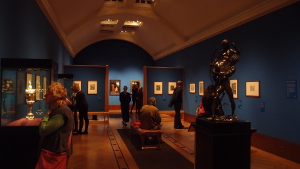
I saw this exhibition over a year ago at the Queen's Gallery at Holyrood in Edinburgh but went again when I saw it had moved down to the gallery at Buckingham Palace. If you get your ticket stamped you can go back again for free.

The gallery is similar to the gallery at Holyrood, not large and fairly understated. It is very nicely decorated and set out however, the term "royal" fits. I went early on the Sunday between Christmas and New Year and should not have been surprised at how busy it was around and about. Having said that, this is Buckingham Palace and The Mall, so we expect tourists milling about. It was much more crowded outside when I left and I can't say there was much to see really.
On the right, a detail of a Holbein drawing : Margaret, Lady Elyot (1532-34). Details.
Below, Holbein's painting : Noli Me Tangere (1528). Details.
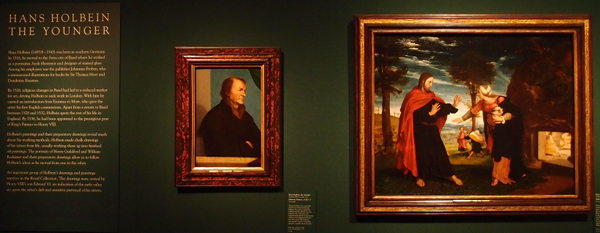
Apart from the art, a good reason to visit was just to see the gallery itself.
Below we see one of the rooms with the Martyrdom of St Ursula in the centre from the "Circle of Master of the Legend of the Magdalen". St Ursula (a British Christian saint) had a pretty nasty end unfortunately, alongside a large number of other virgins with her. Great material for the average late 15th Century artist.
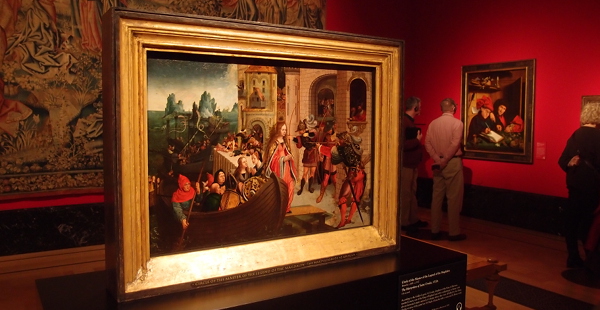
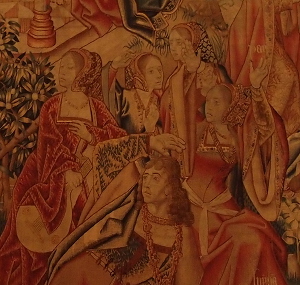
Behind St Ursula above, we can see a tapestry hanging on the far wall. This was matched by a similarly sized tapestry hanging on the wall opposite. They seem to be about 8x4m, so pretty large walls required.
Both tapestries were (probably) owned by Cardinal Thomas Wolsey (he certainly owned one) before being transferred to King Henry's possession once Wolsey was dead.
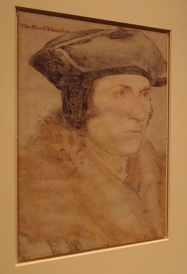
I cannot say I have ever been very interested in the art of tapestry but these were amazing works of art (the pictures I have do not do them any justice). Both are stunning craftmanship, with high detail and colour. Painstakingly work, woven in the Low Countries (Flemish origin).
On the right, Holbein's drawing of (Saint) Thomas More.
I have mixed feelings about More, my original ones being moulded by one of my favourite films, A Man for All Seasons, written by Robert Bolt and directed by Fred Zinnemanm.
The film (and Paul Scofield's portayal) is very sympathetic to More but over the years one learns of less likeable aspects of the man: the torture and burning of heretics, the hair shirt and the foul language directed at his enemies (Luther could give as bad in return however). More was a fundamentalist, even if he had some humanist inclinations (and authored Utopia). Being the man that hounded Willian Tyndale to his death counts as a large negative legacy to me.
A finished Holbein portrait of More is superb though.
The other major artist highlighted here is Albrecht Dürer. Dürer was never someone I had paid a great deal of attention to, but like Holbein, becoming more acquainted with his work has opened my eyes to how great a skill he had. He is very well known for his engravings but his painting is also a a very high quality.


Above, a detail of one of Dürer's Apocalypse woodcut illustrations, the Whore of Babylon, often a favourite subject of the time. These illustrations were a great success and made him famous throughout Europe. Very detailed and beautiful work.
On the right, Dürer's famous self-portrait of 1500.
To finish, a quick look around the shop. Christmas time was still in swing, hence the decoration, and it was busy with people having a look around.
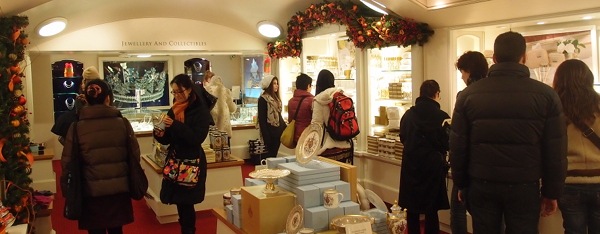
Really finishing now,, it's great being able to take photographs inside the gallery (no flash though). Some allow this, some do not, even when it's only the gallery's own collection on display, no borrowings. It is also enlightened to allow free re-entry if you get the ticket stamped. I wish more people did this.
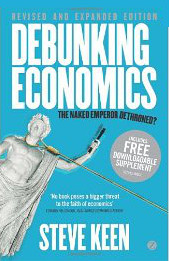
John Lancaster has a piece in the London Review of Books called Let’s call it failure. He looks at the poor state of the UK public finances, the bad state of the economy and how things are going from bad to worse. Not exactly as planned.
Lancaster wrote a book a few years ago called Whoops! about the 2008 financial crash (or as he points out the Chinese preference to say "Western Financial Crisis") and he returns to the subject here. It makes a fairly depressing read, but this is economics and the whole edifice of Economics is a sorry state of affairs.
One of the presents I received at Christmas was a book called Debunking Economics by Steve Keen, an economist well known for predicting the recent calamities and being generally ignored (by most). The book's a dead-tree edition and on my "to read" pile (I have read some). The more I read about this field the more I consiider it eminently worth "debunking", seeing it as mostly bunk. Economics wants to be seen as a science, even something like Physics but it is far from a science and doesn't seem to work. Especially the macroeconomic realm - the big questions. Is Keynes right after all? Or less wrong?. Like the Queen said: Why did no one see it coming? Well, I think I know the answer to that.
If you have ever wondered what the economic term multiplier means then Lancaster's essay explains it well. Good explanations are in short supply, so more is welcome.



